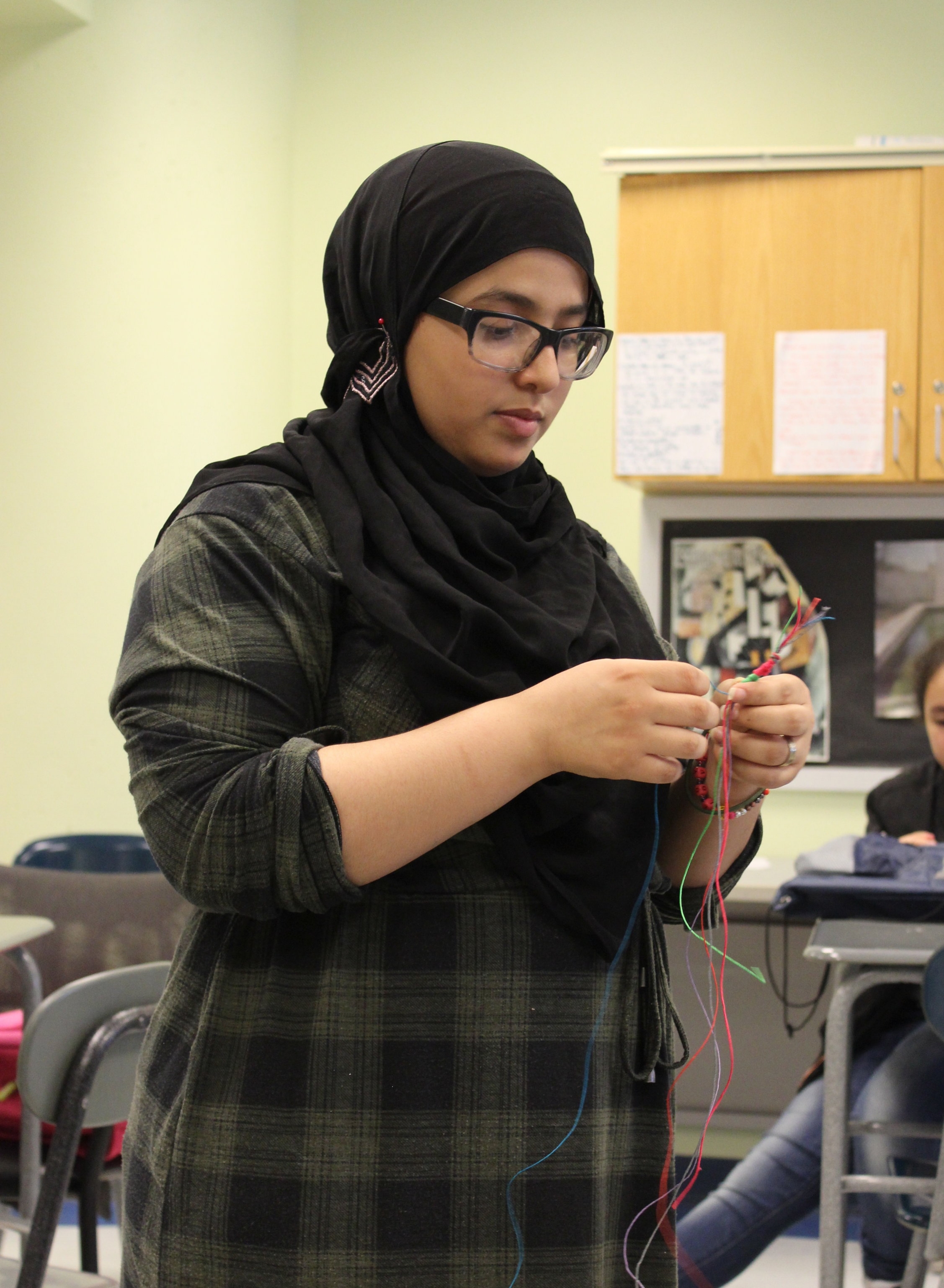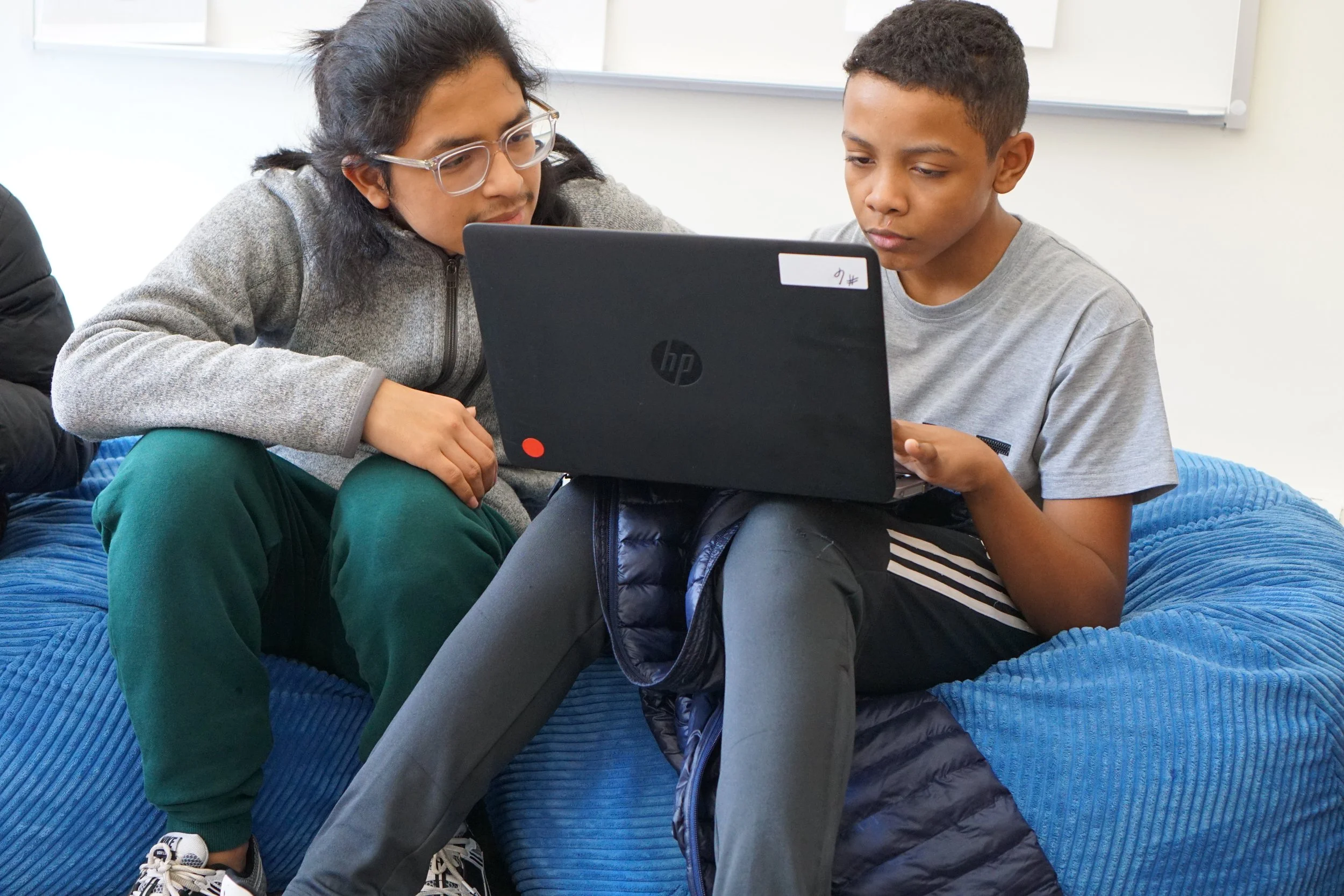
Welcome to the BEAM Blog!
Center for Talented Youth Admissions Results
On Saturday, December 16, 25 BEAM students took the admissions test for the Center for Talented Youth (CTY). CTY offers students three-week summer programs in math, science, English, and humanities, provided they score well either the math or verbal section of an admissions exam (the SCAT).
This week, we found out that a 18 students passed the test, qualifying to take either math or verbal courses, or both! Next summer, they could take courses ranging from Discrete Math to Astronomy to Philosophy. CTY's summer programs normally cost about $4000, but their exemplary financial aid means that the median BEAM student pays only $100 to attend.
Congratulations to Jordan, Mariwa, Consuelo, Awa, Yeramis, Mohamed, Anthony, Noe, Emyr and 9 other students who have opened a door to the next opportunity! We are so proud of you all.
Winter Party 2017: Ugly Sweater Edition
As 2017 comes to an end, BEAM really appreciates the moments we spend with our students before another year begins. Each year, we invite all BEAM alumni to a Winter/Holiday party where students get to mix and mingle, listen to music, play board games, take pictures and enjoy some food. This year we made our party an Ugly Sweater Party with a competition judged by BEAM students. Take a look at the Ugliest sweaters you can imagine!
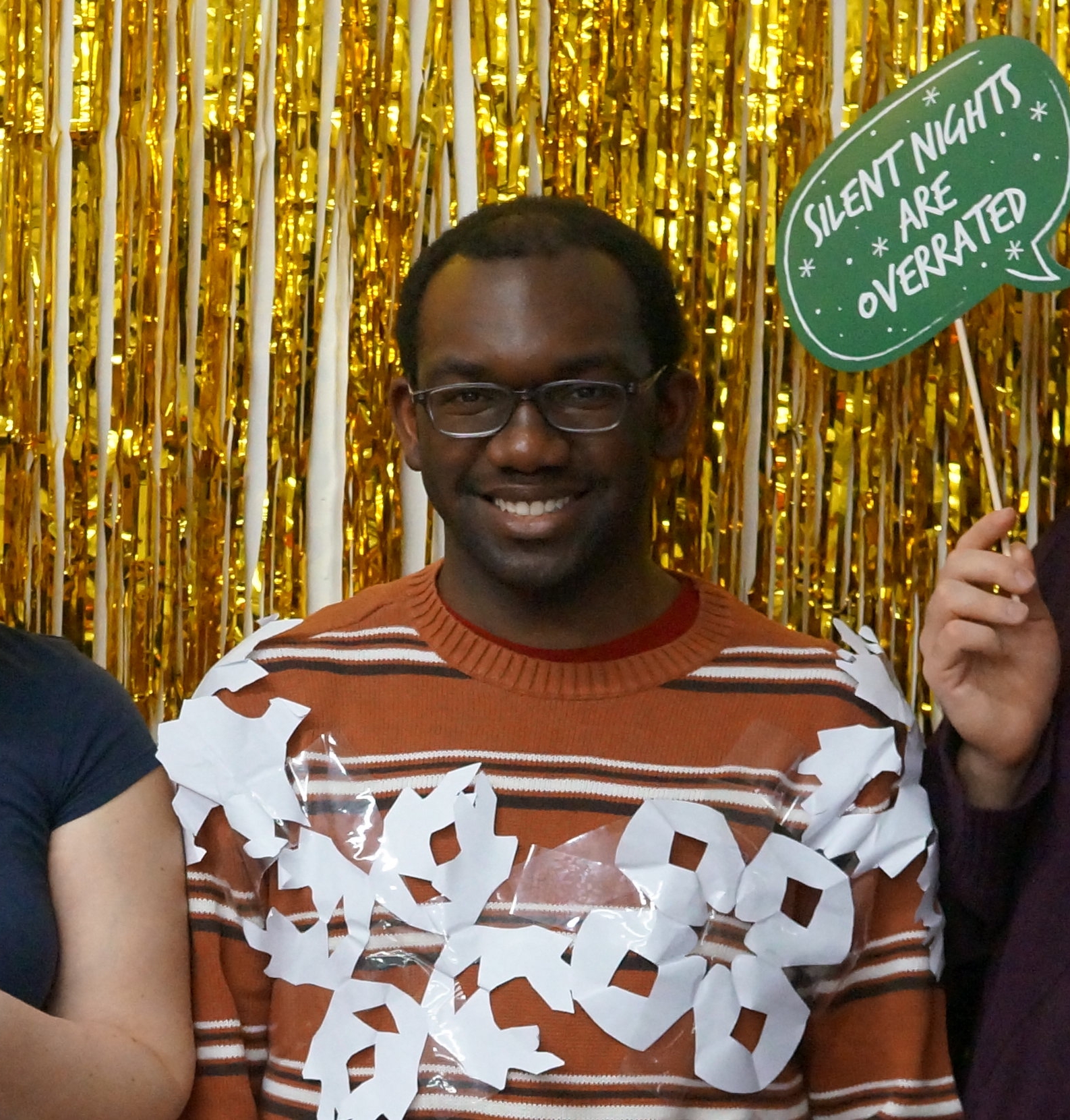
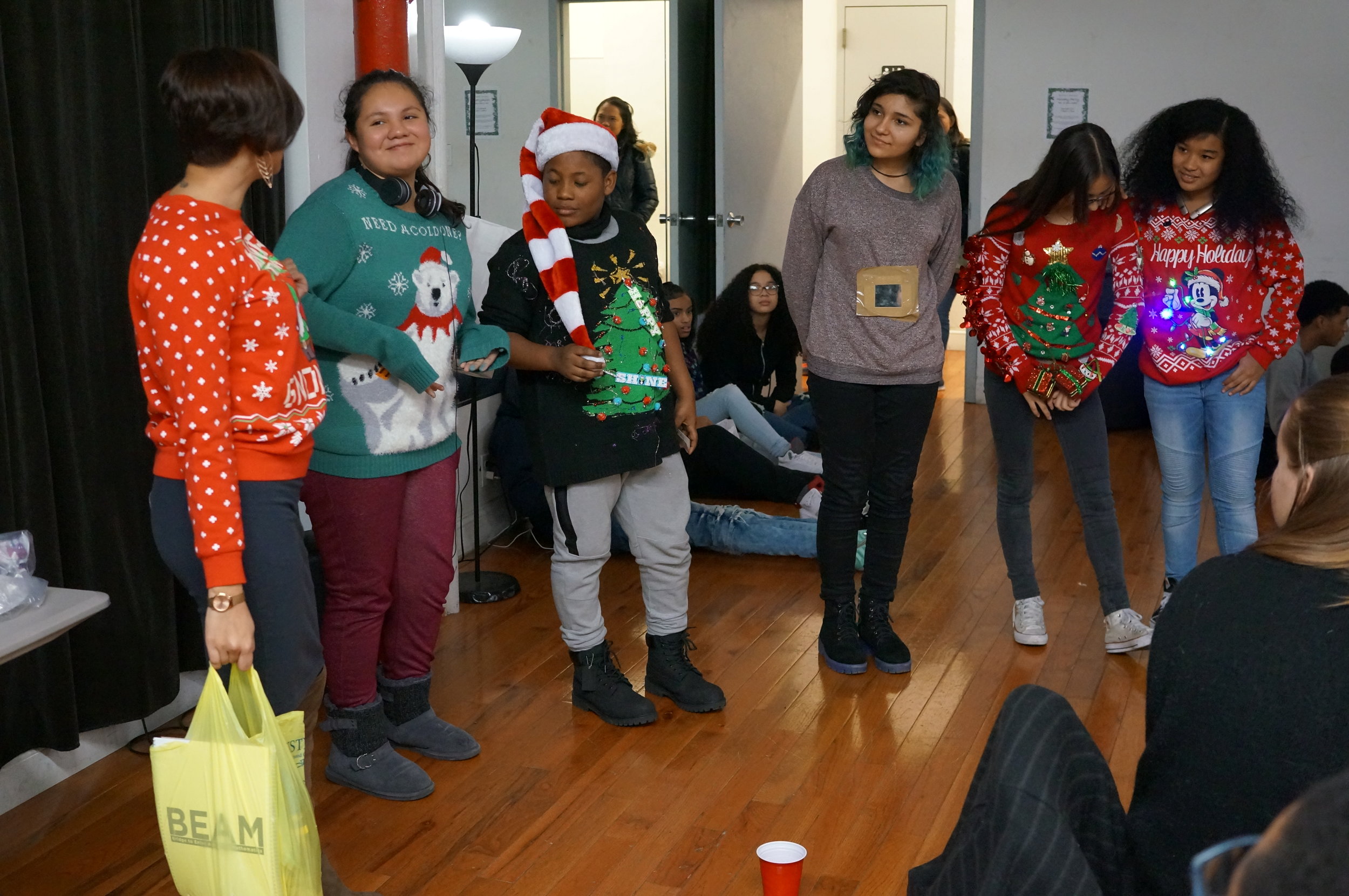
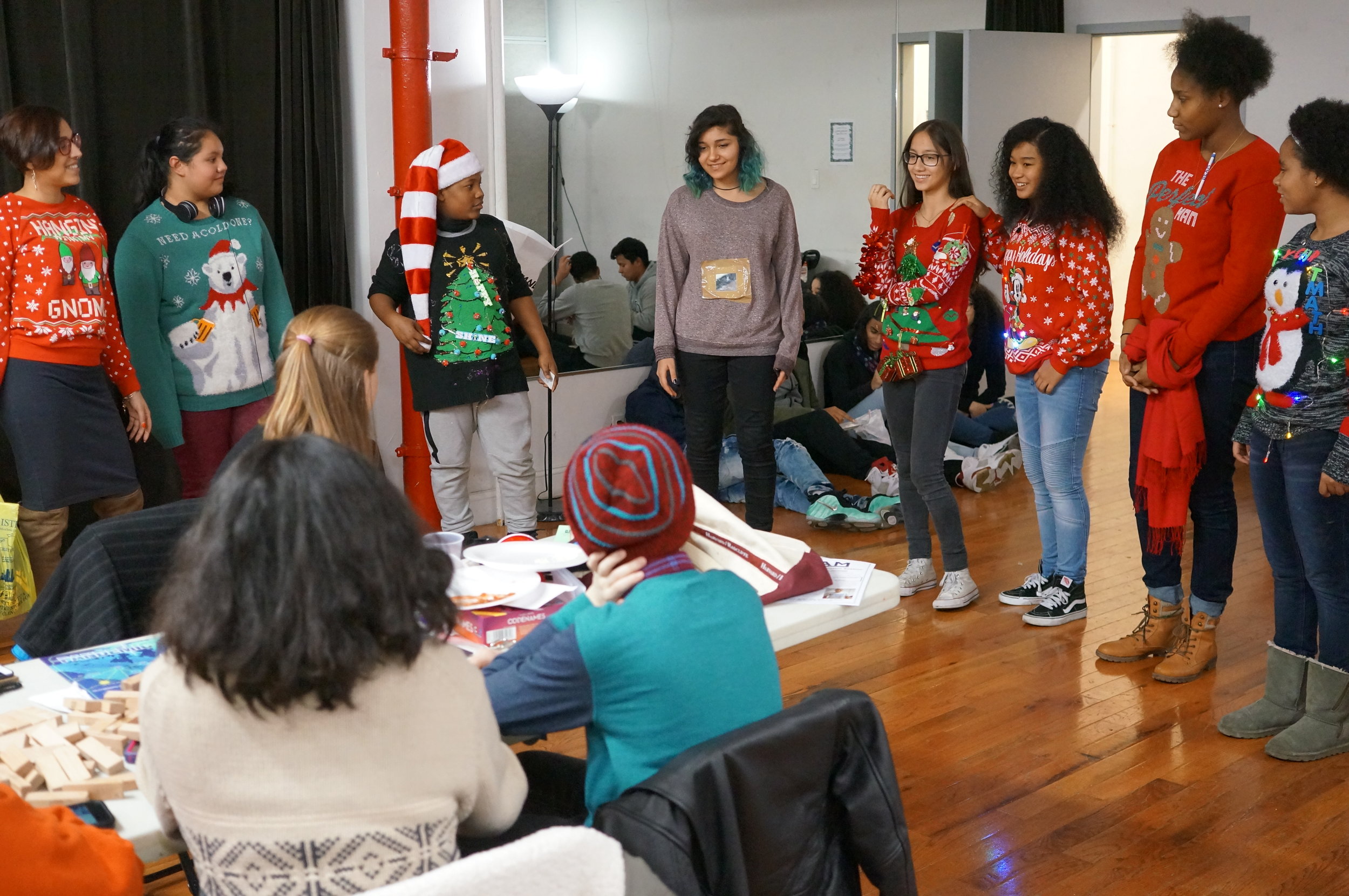
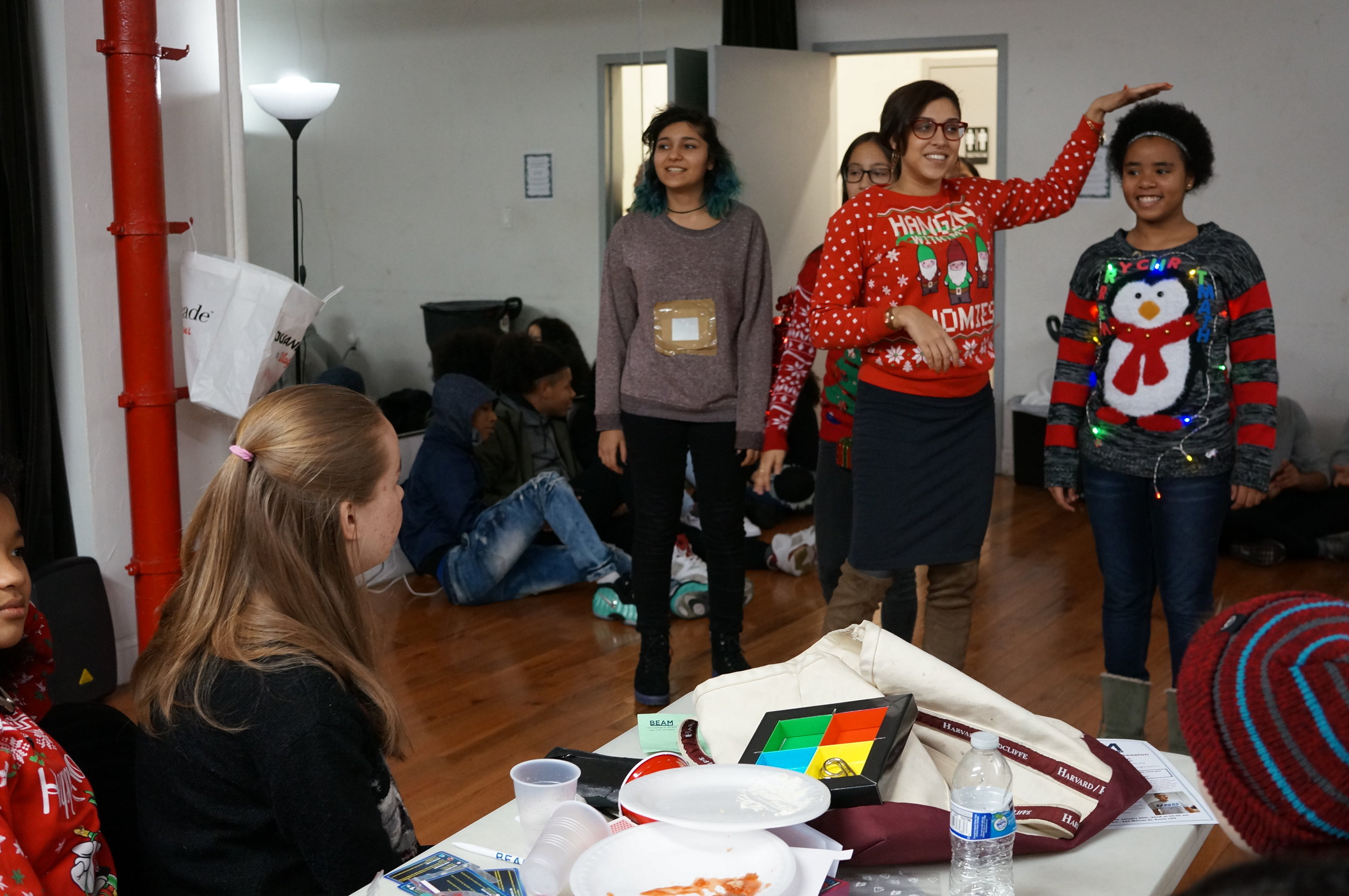
Semi-finalists for the Ugly Sweater Competition were: Luz, Elijah, Michelle, Mariam, Deja, Vielka and Thays.
The top three finalists were: Michelle, Mariam and Thays.
And the winner was: Thays -- with her "Merry Chris-MATH" sweater! All students took home BEAM swag as prizes.
In addition to the Ugly Sweater segment of our party, students played games like: Set, Dominion, Settlers of Catan, Swish and Uno. They also took a stab at solving some logic and math puzzles and received cool BEAM swag if they solved them. Students took fun holiday pictures at the photo booth and enjoyed some yummy Chinese food. Overall, it was a great afternoon spent with some awesome teenagers! Check out some great moments below!
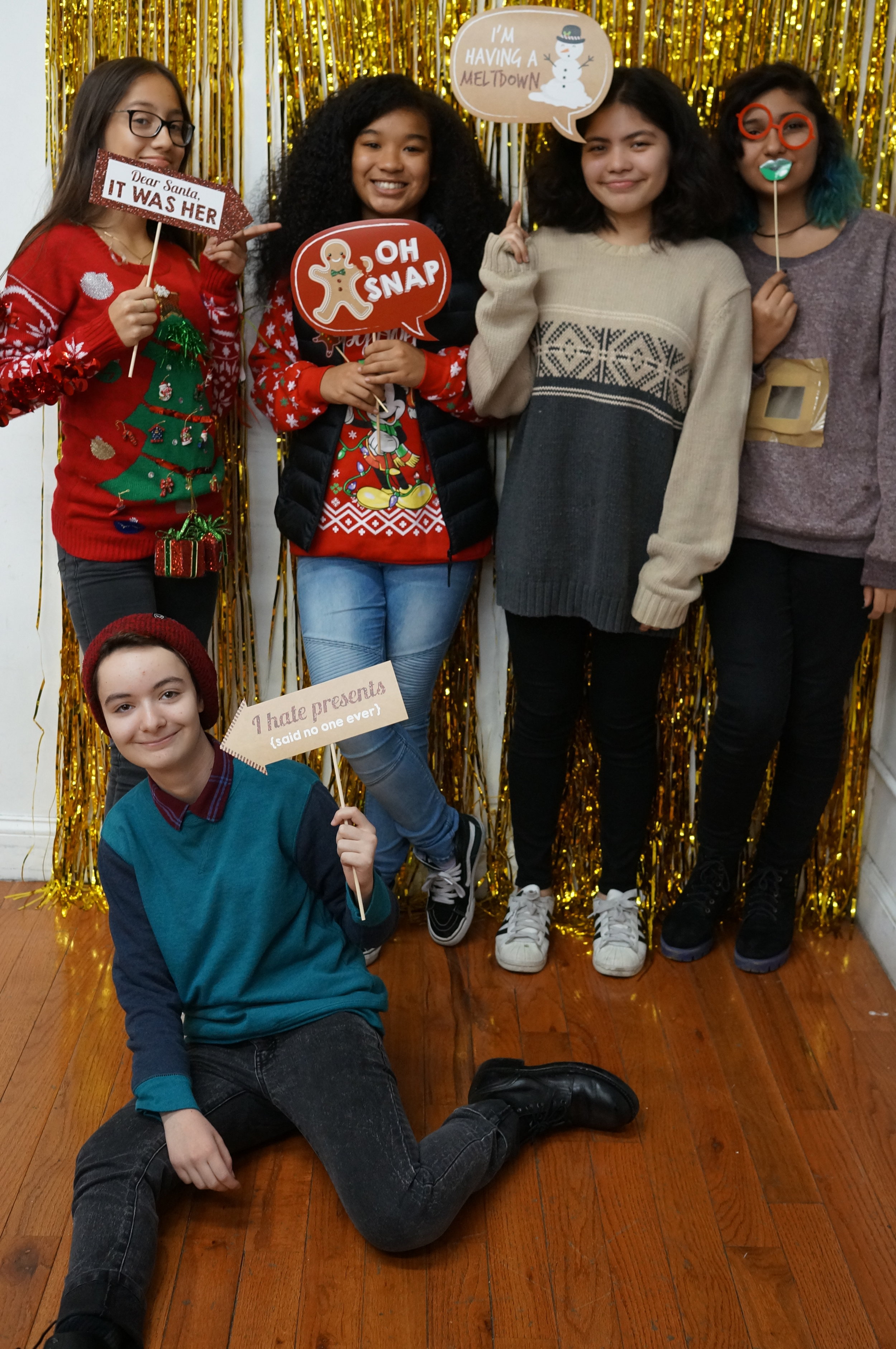
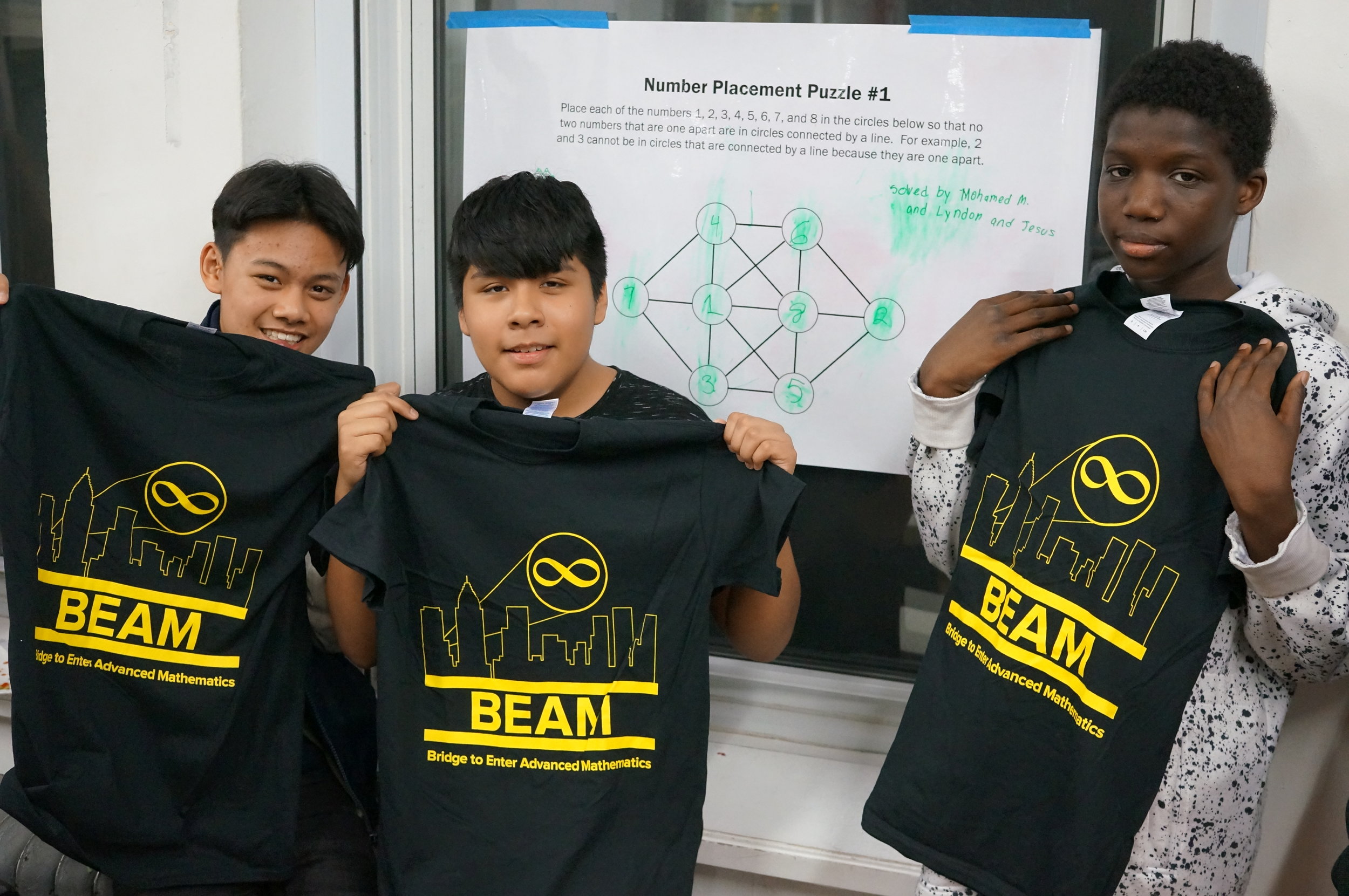
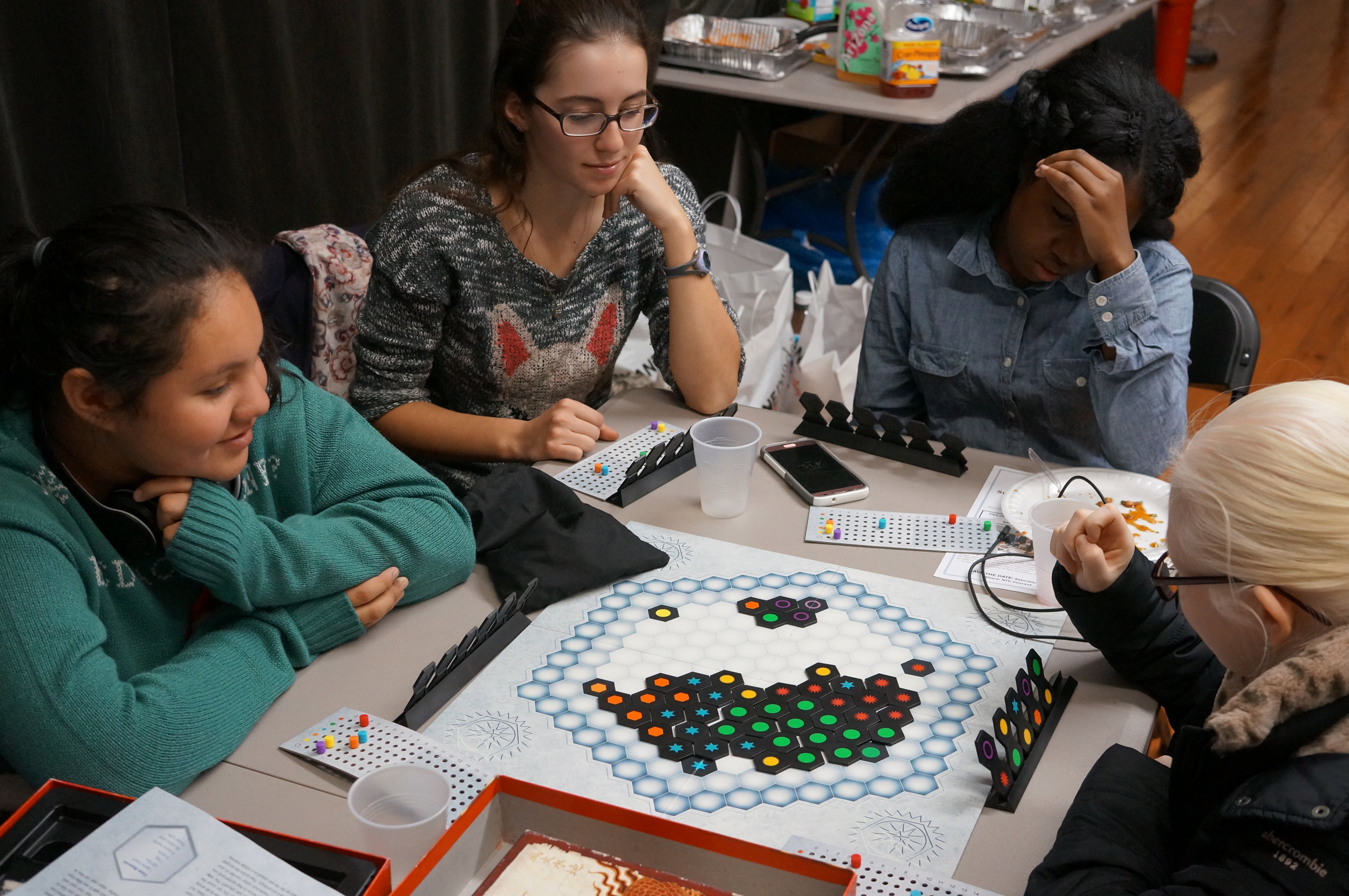
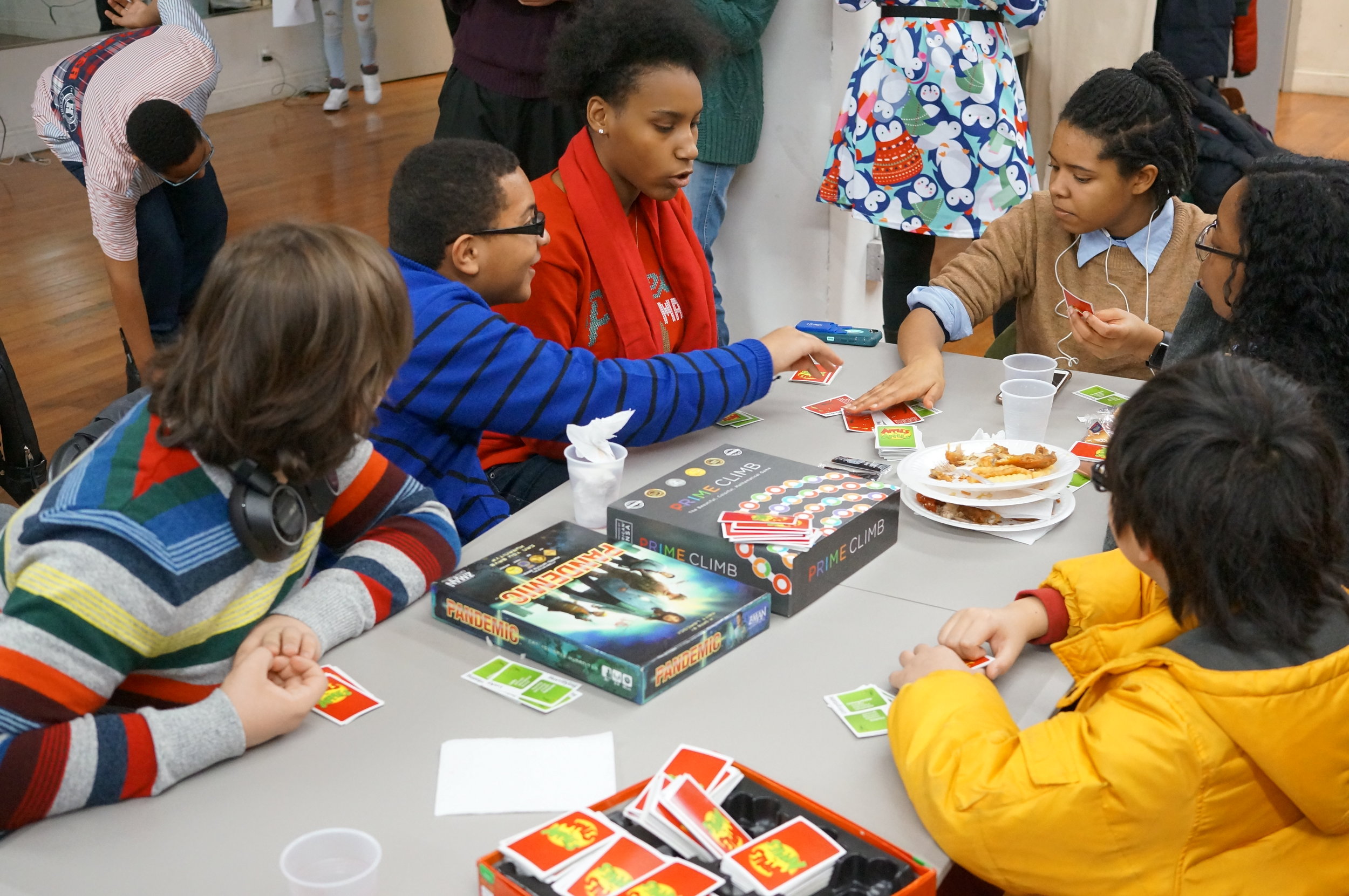
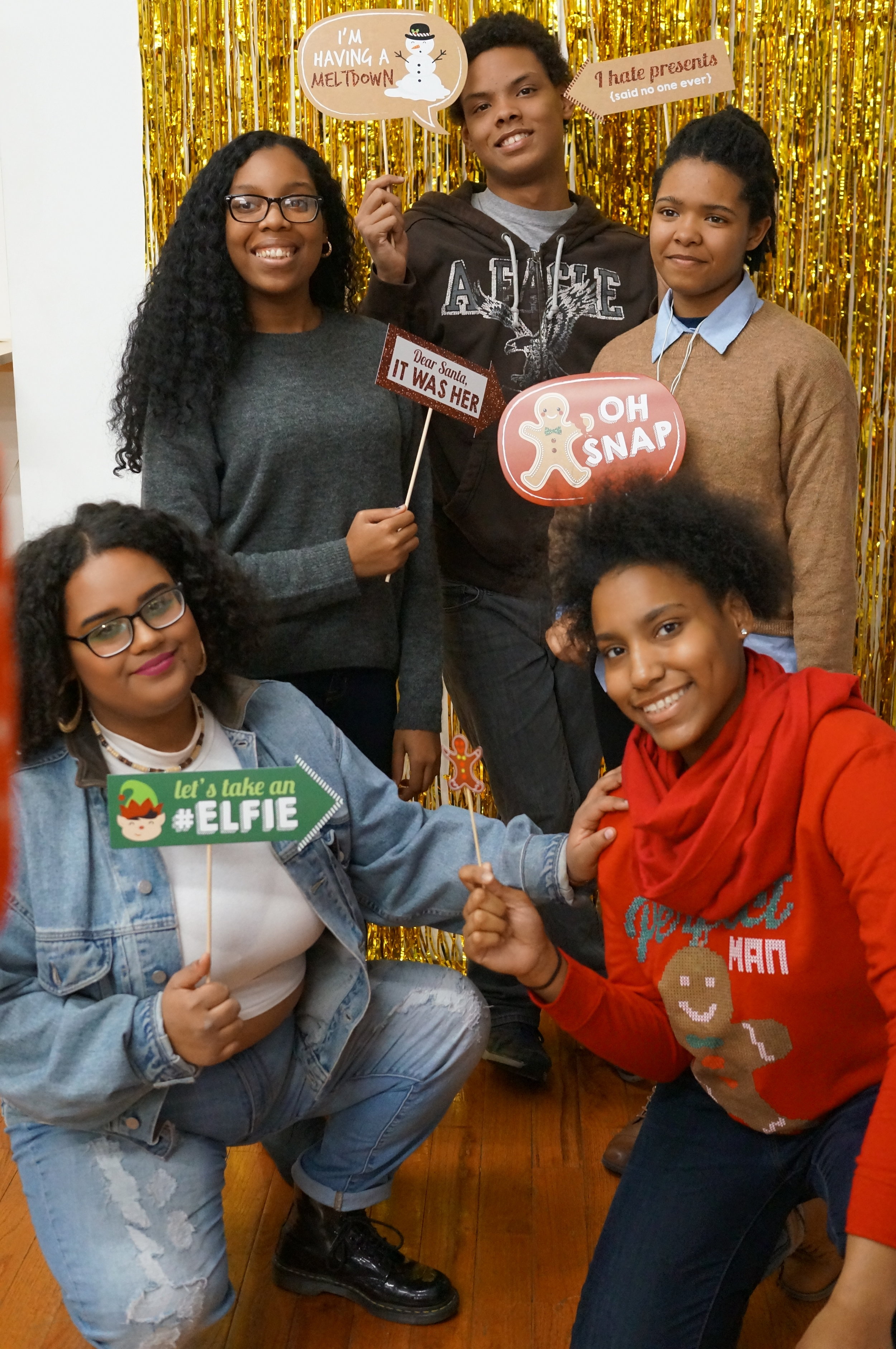
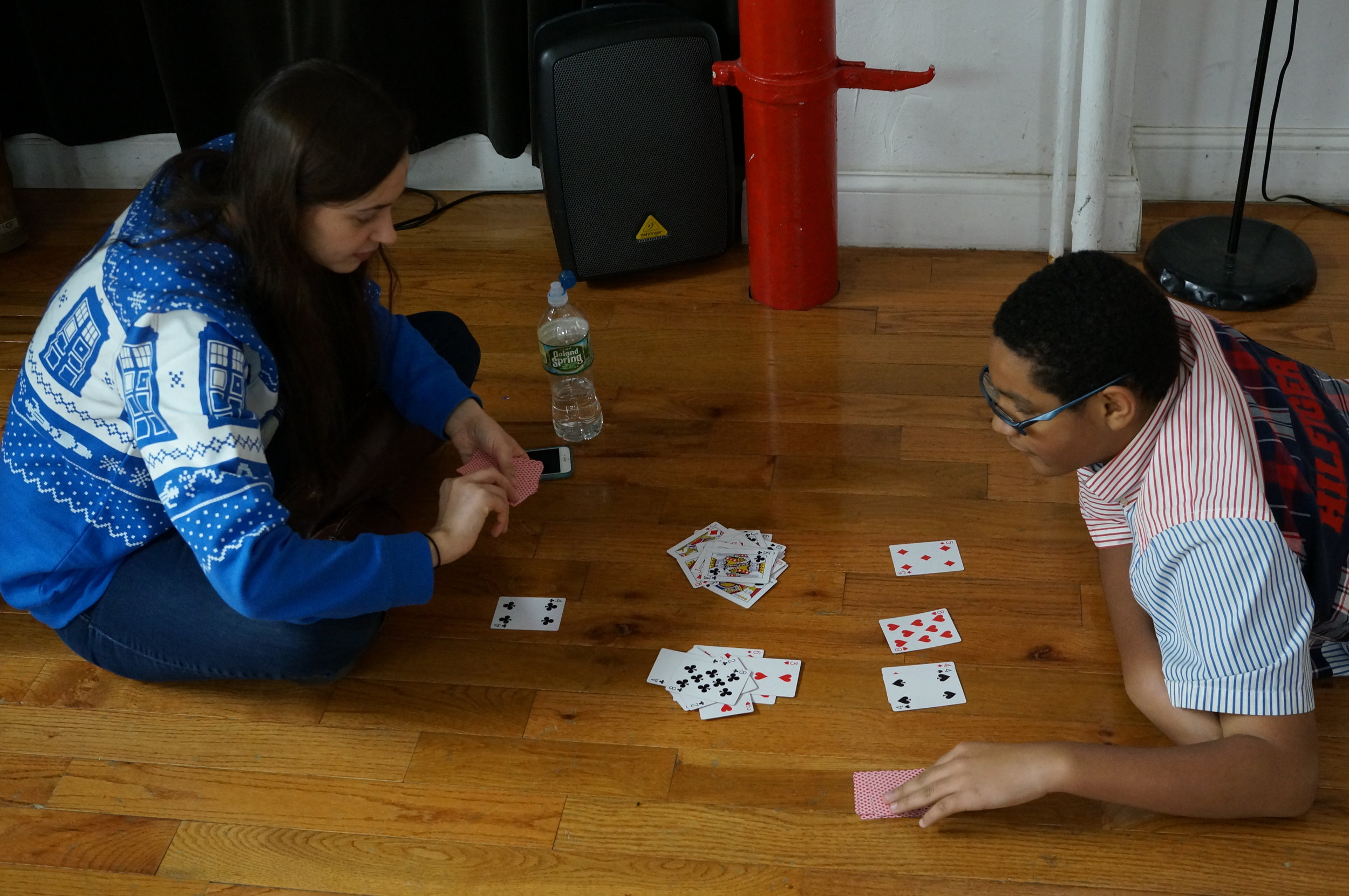
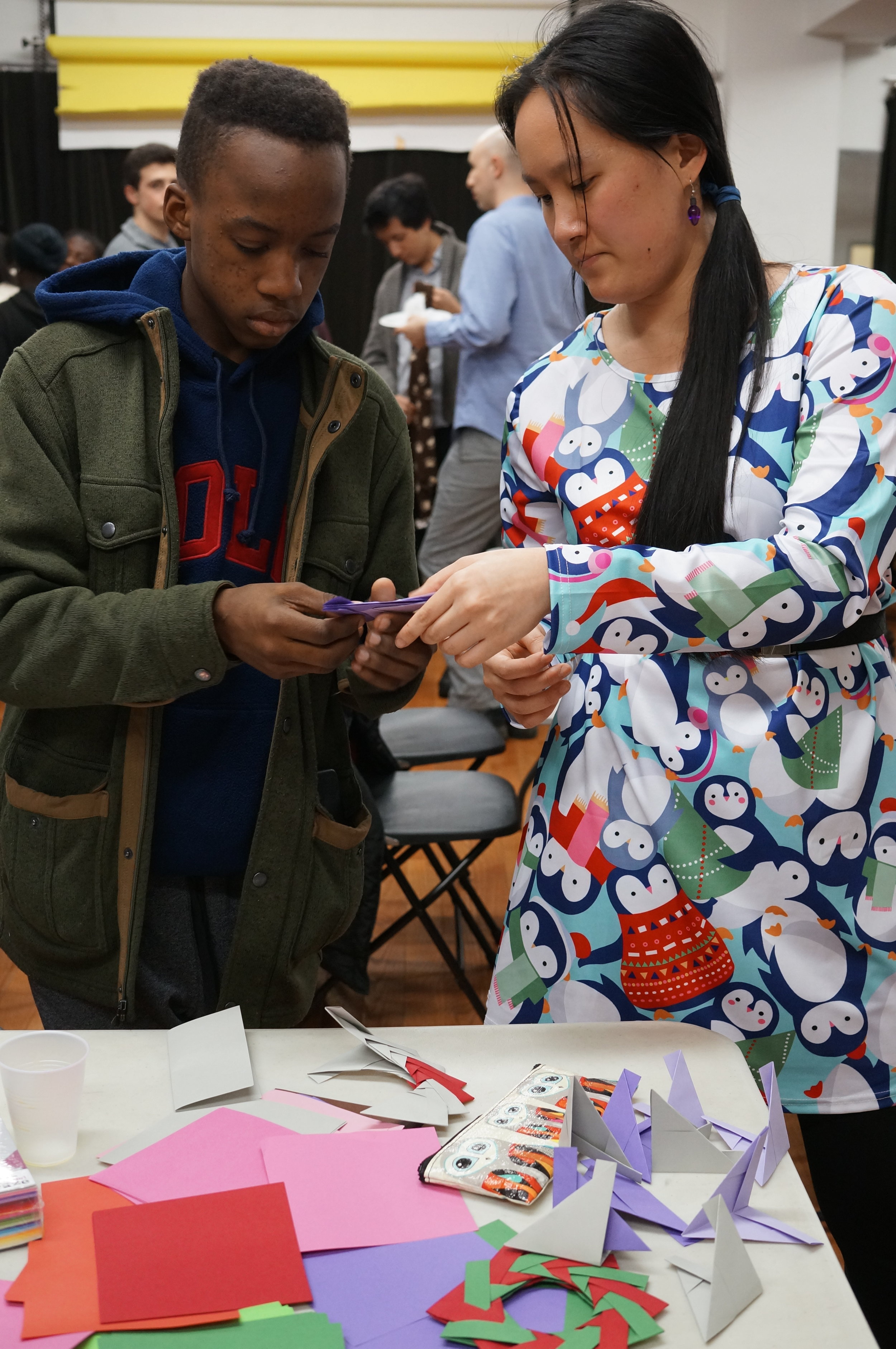
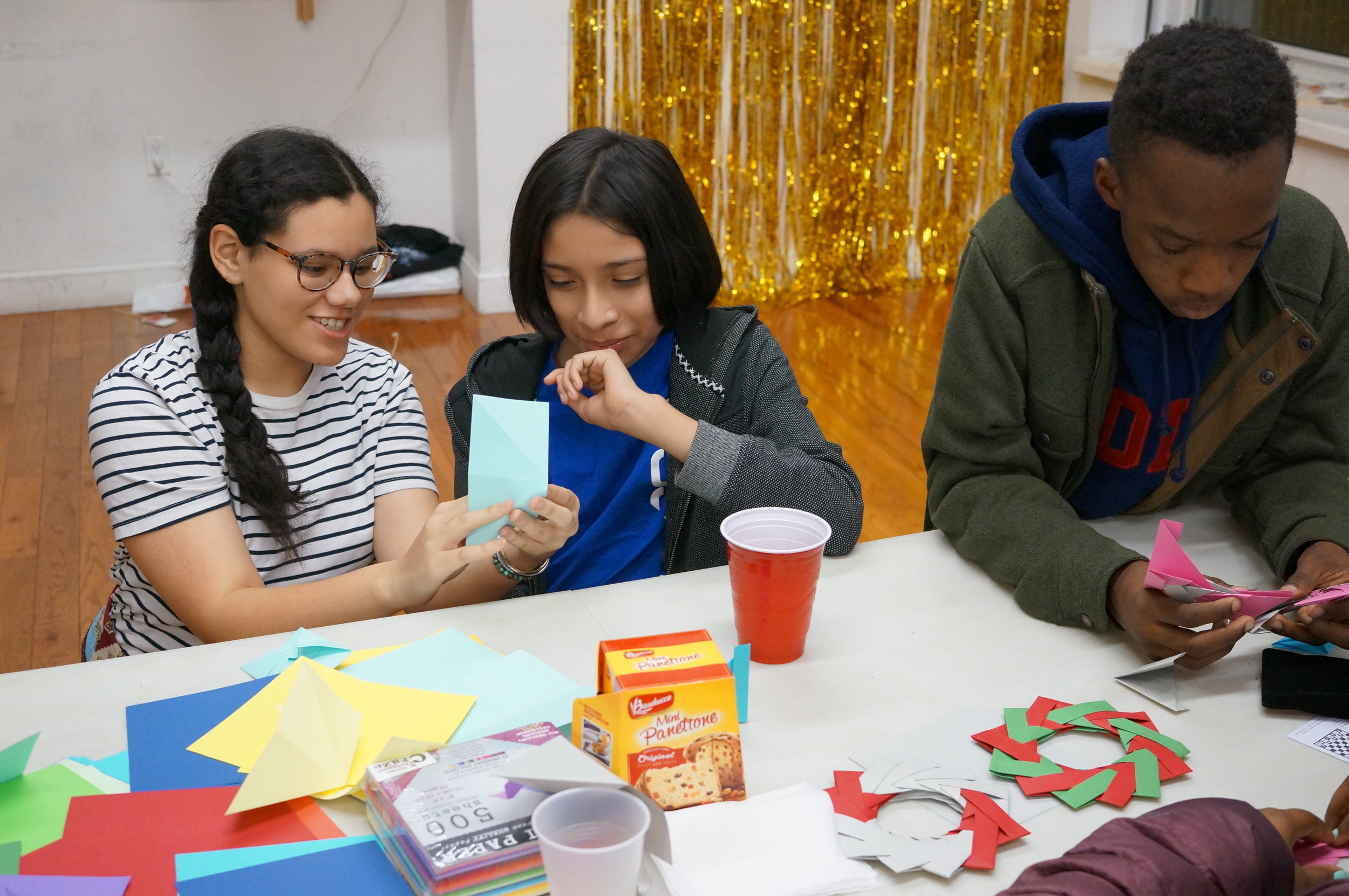
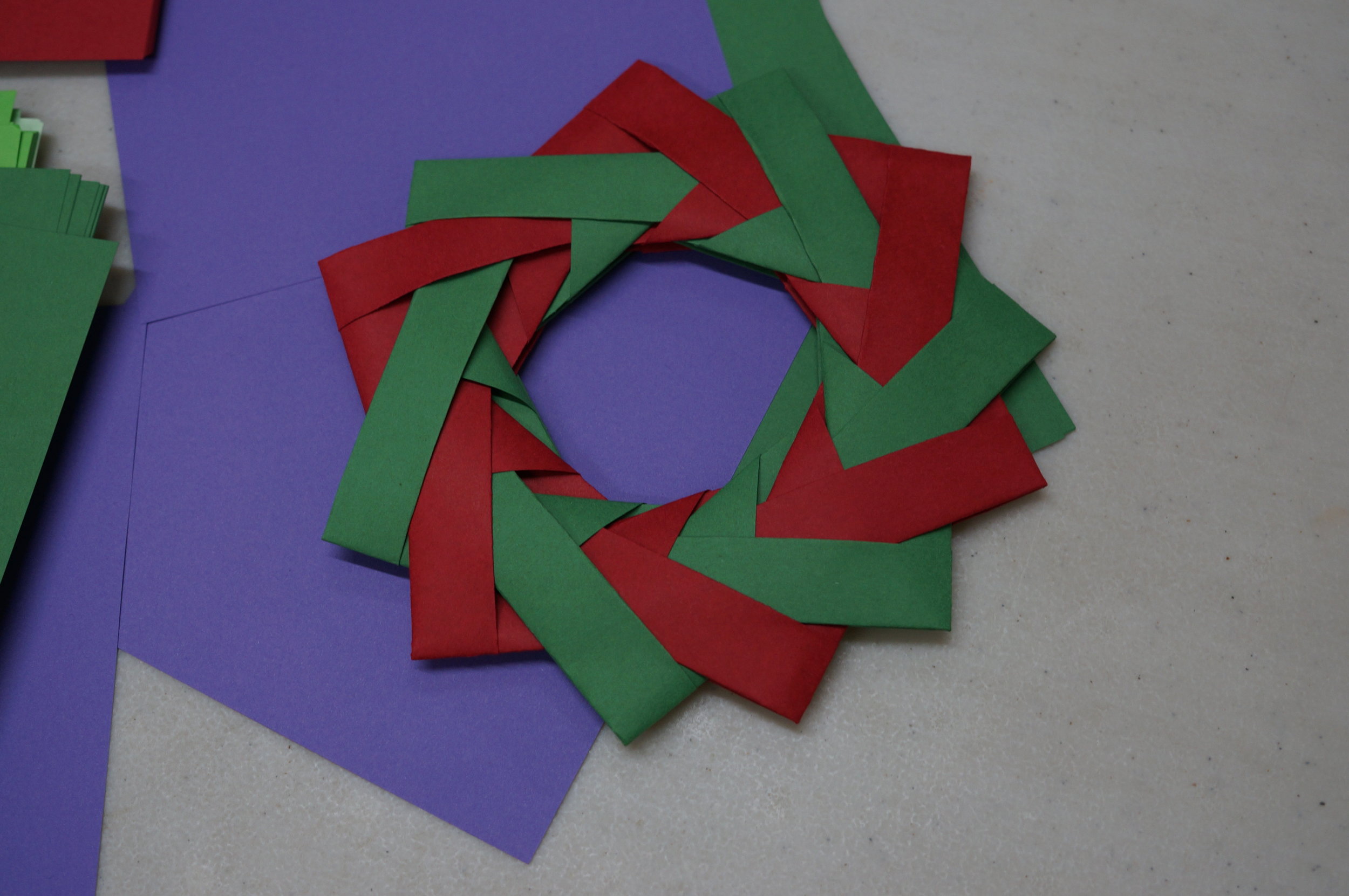
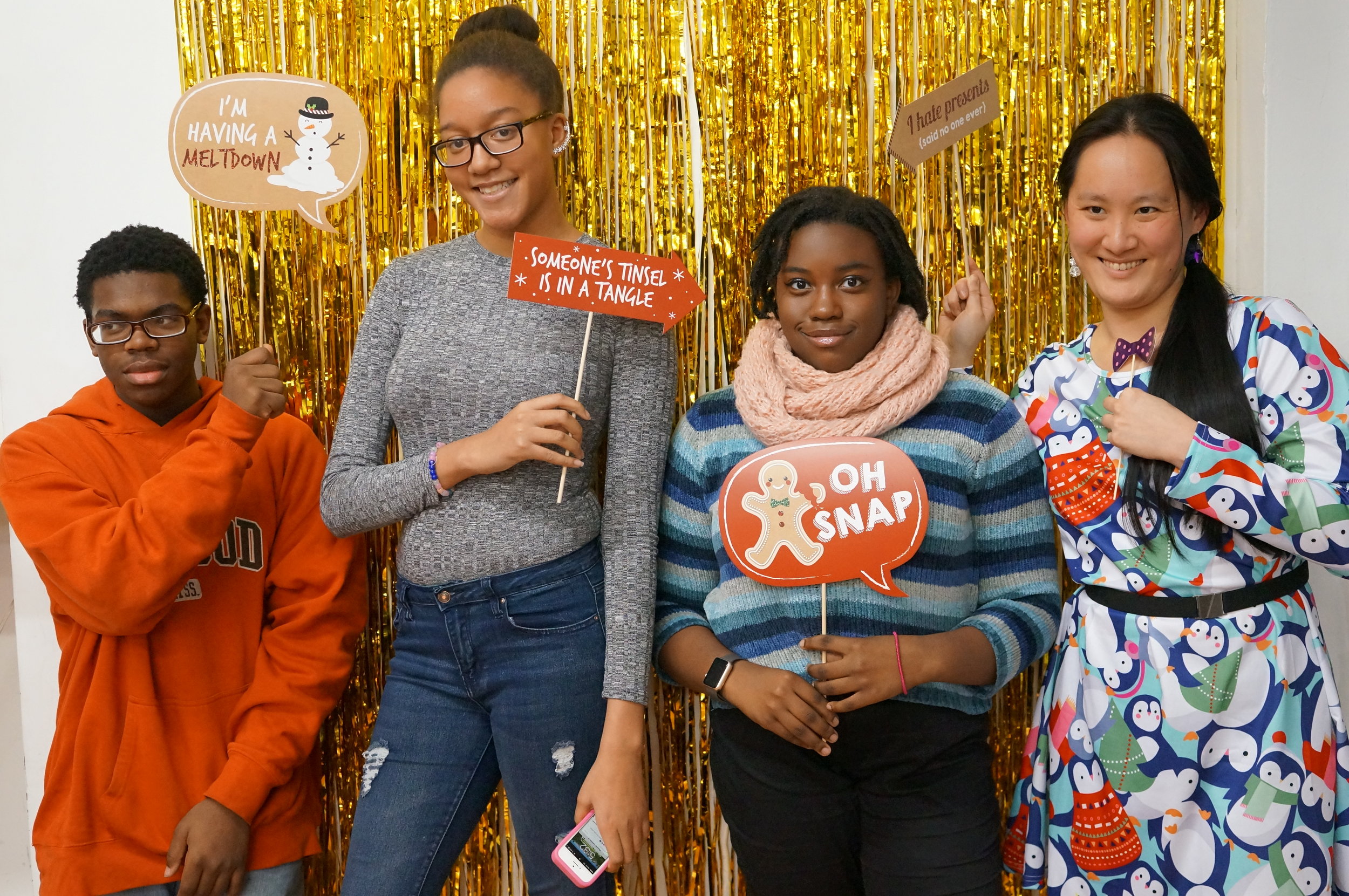
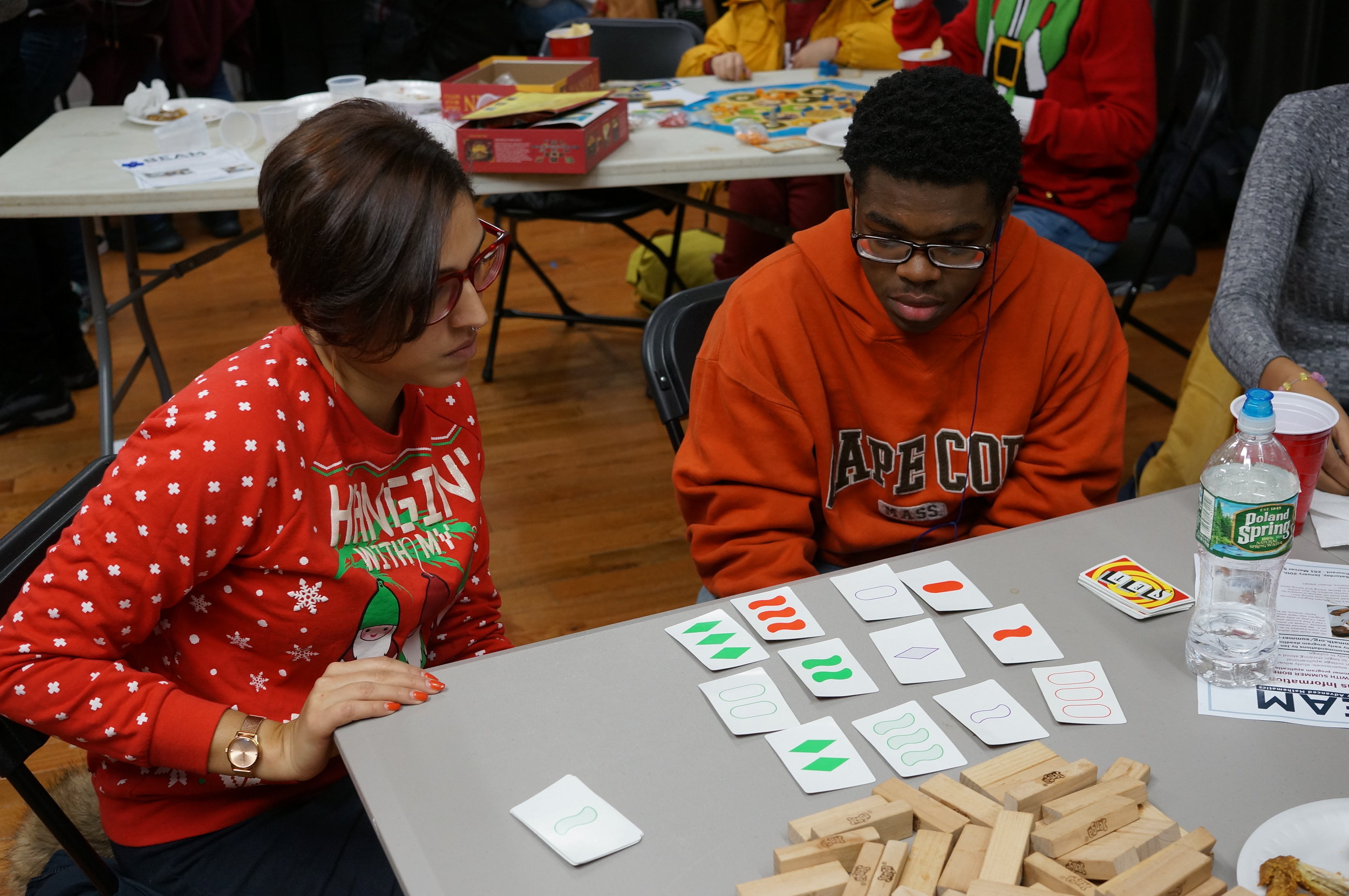
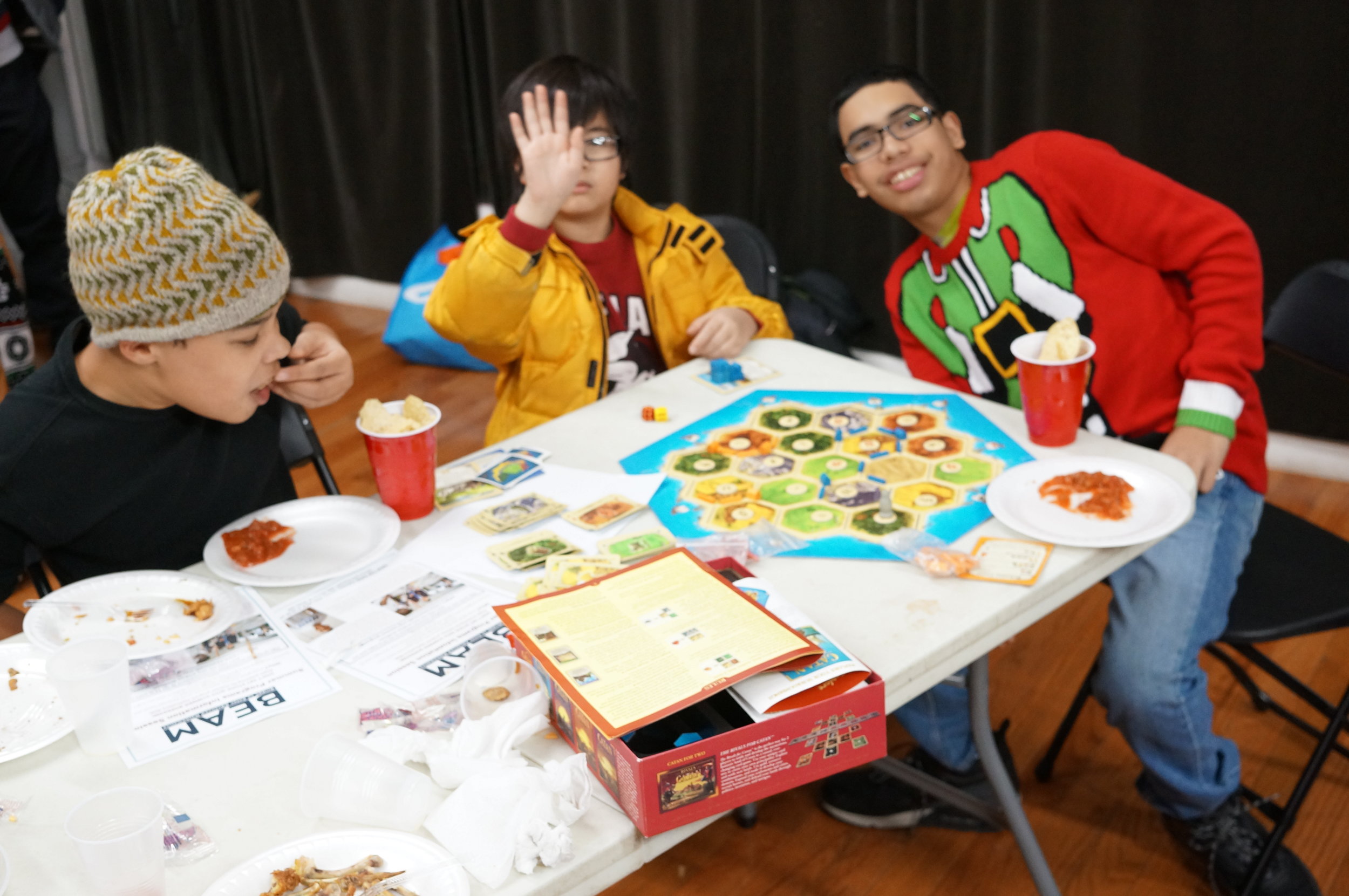
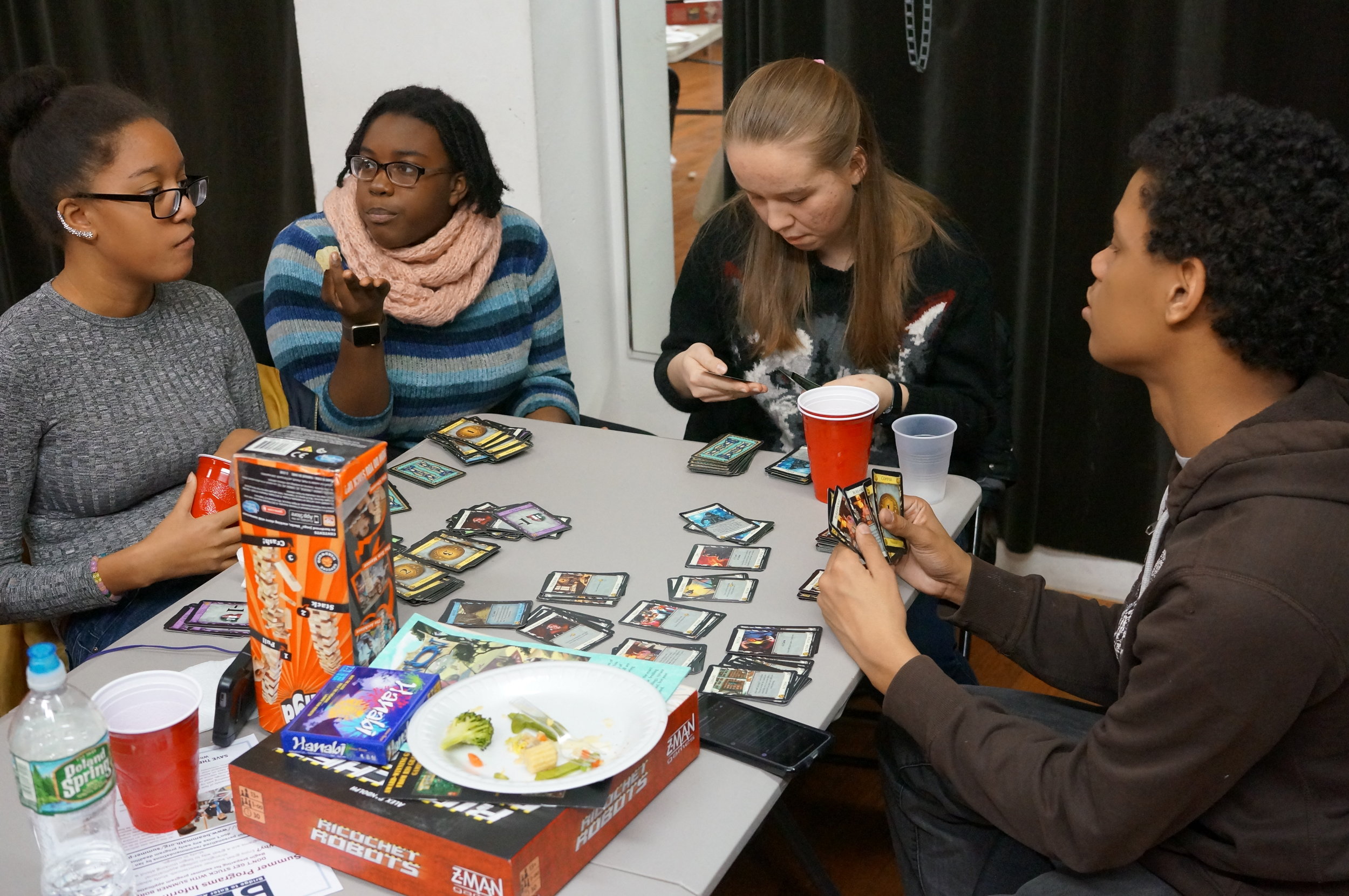
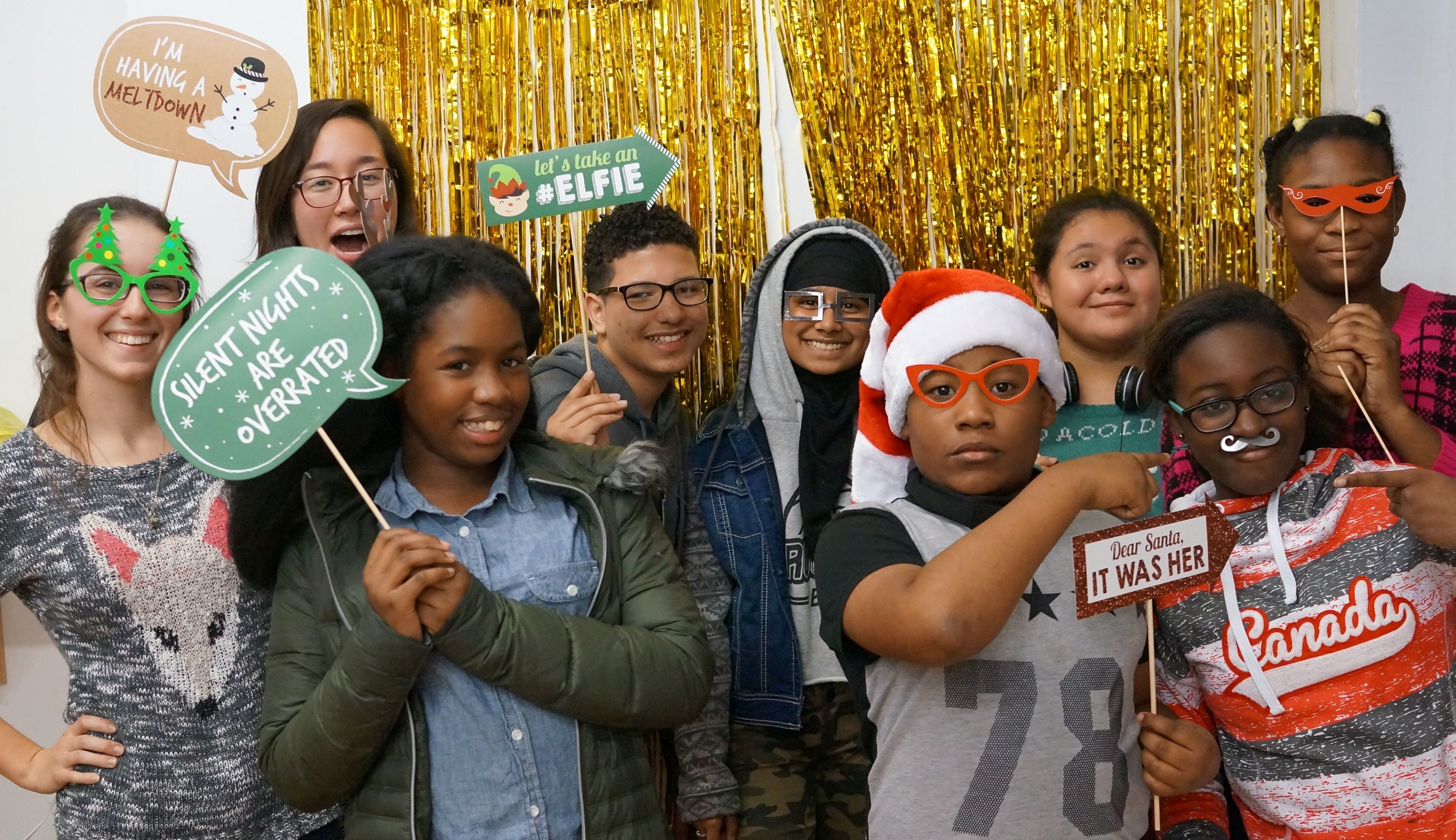
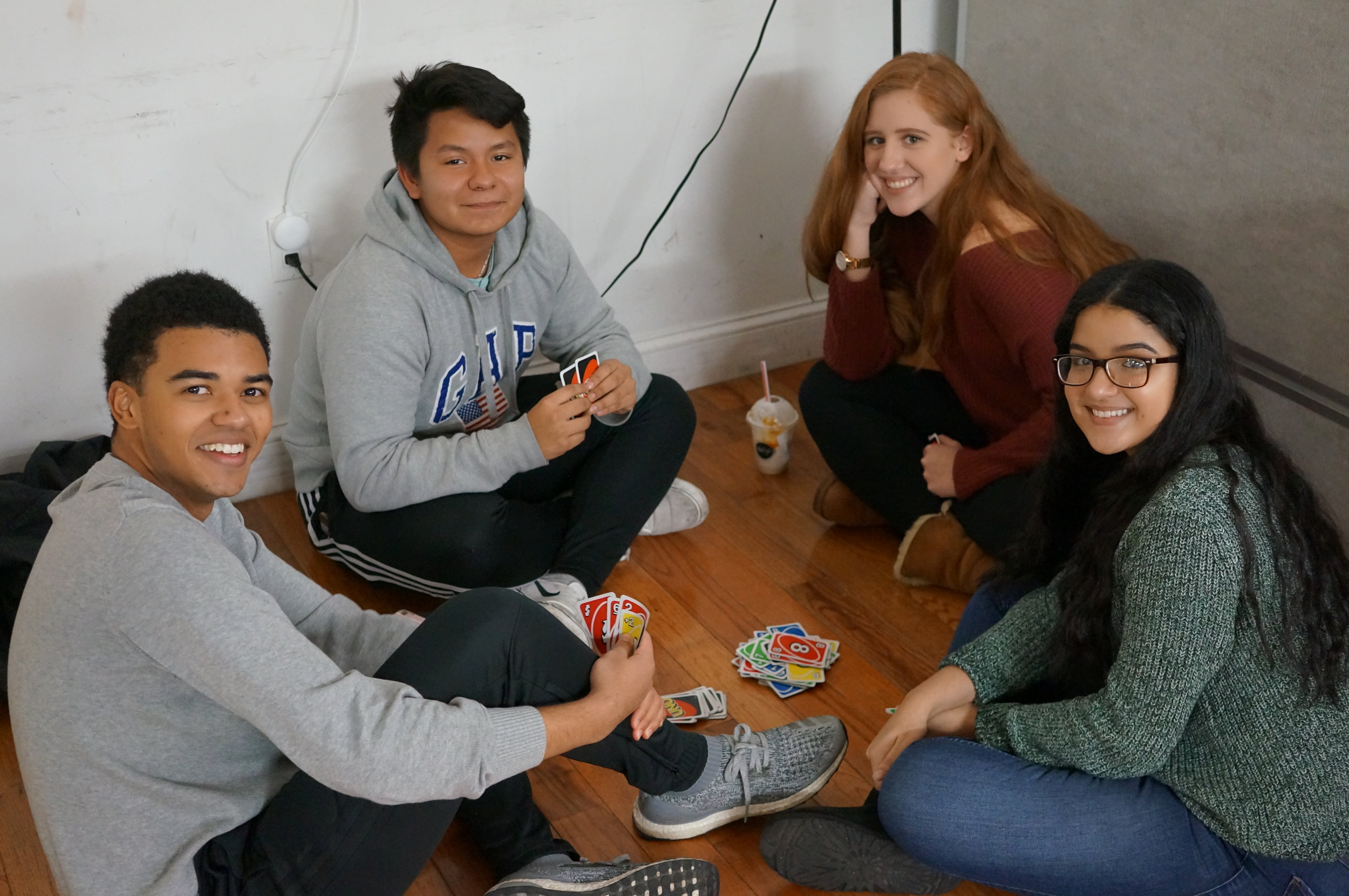
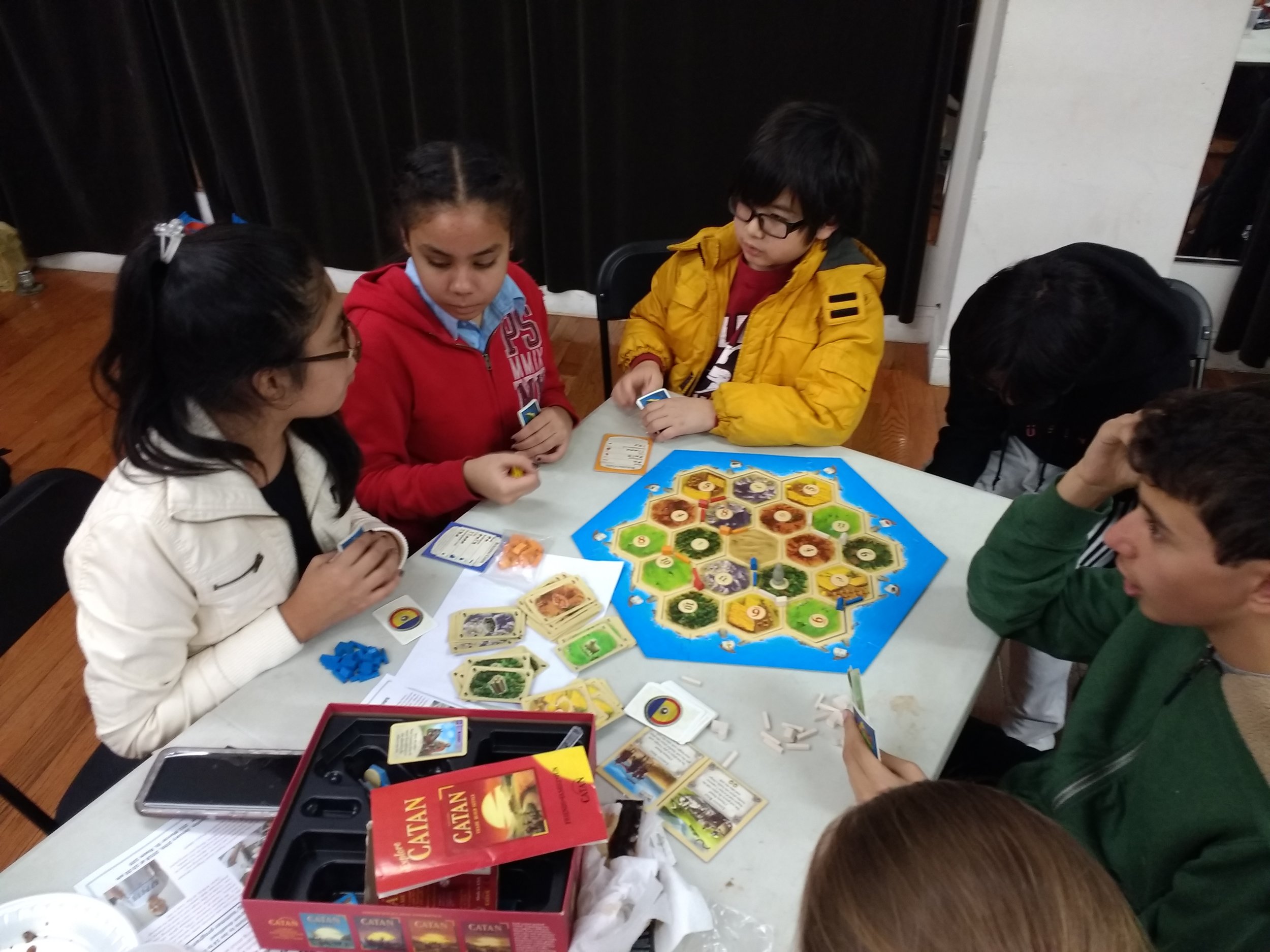
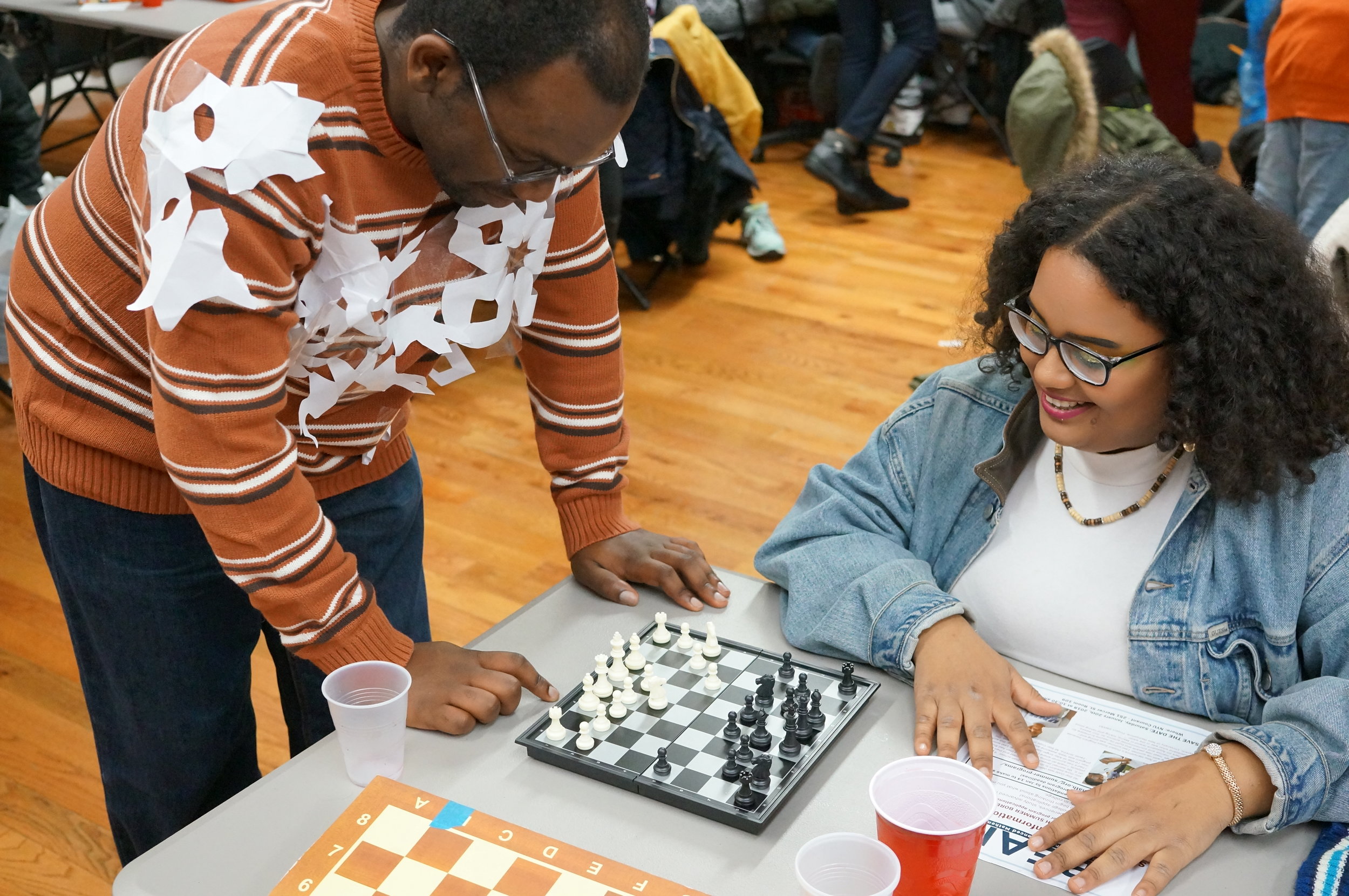
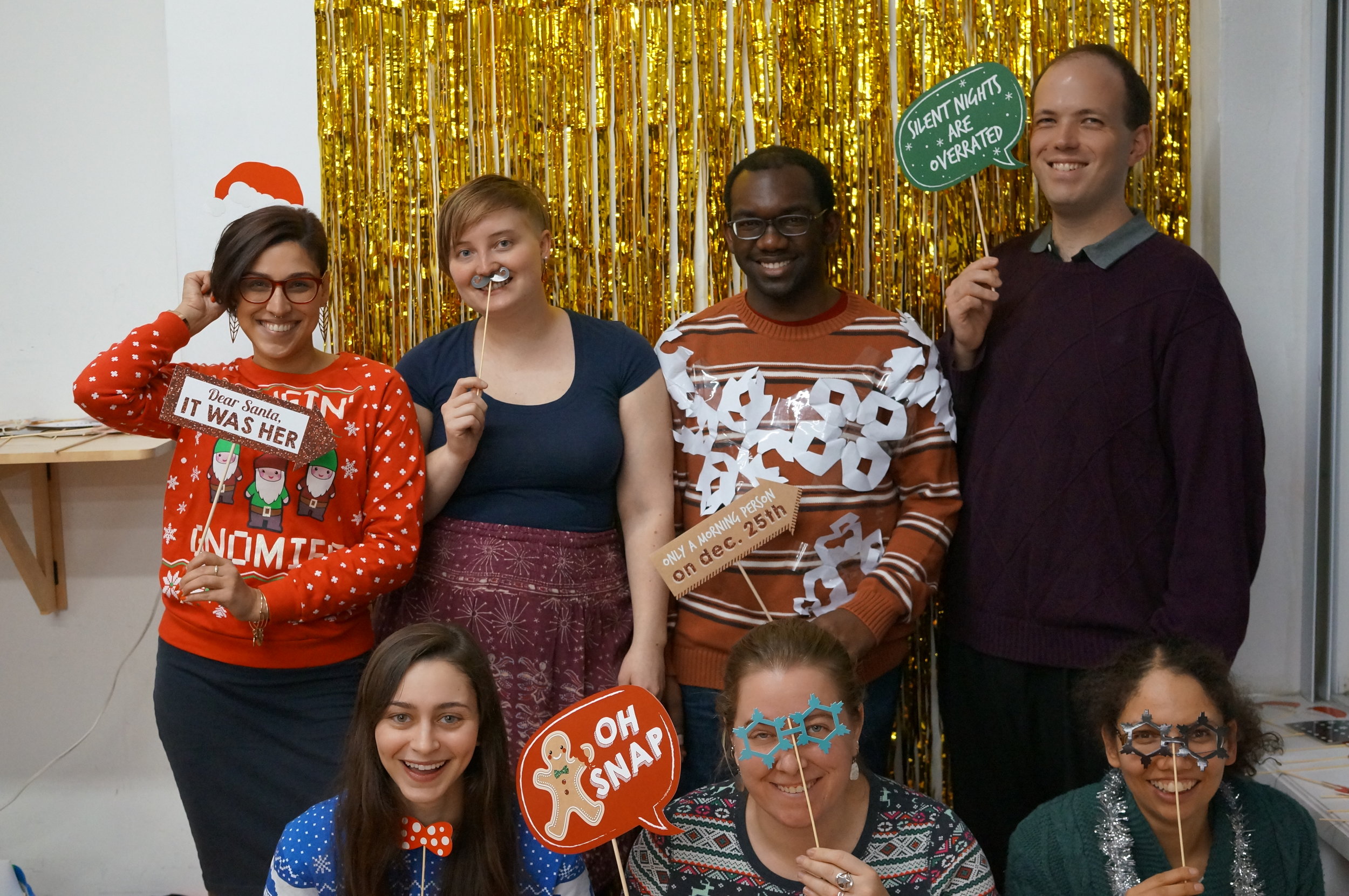
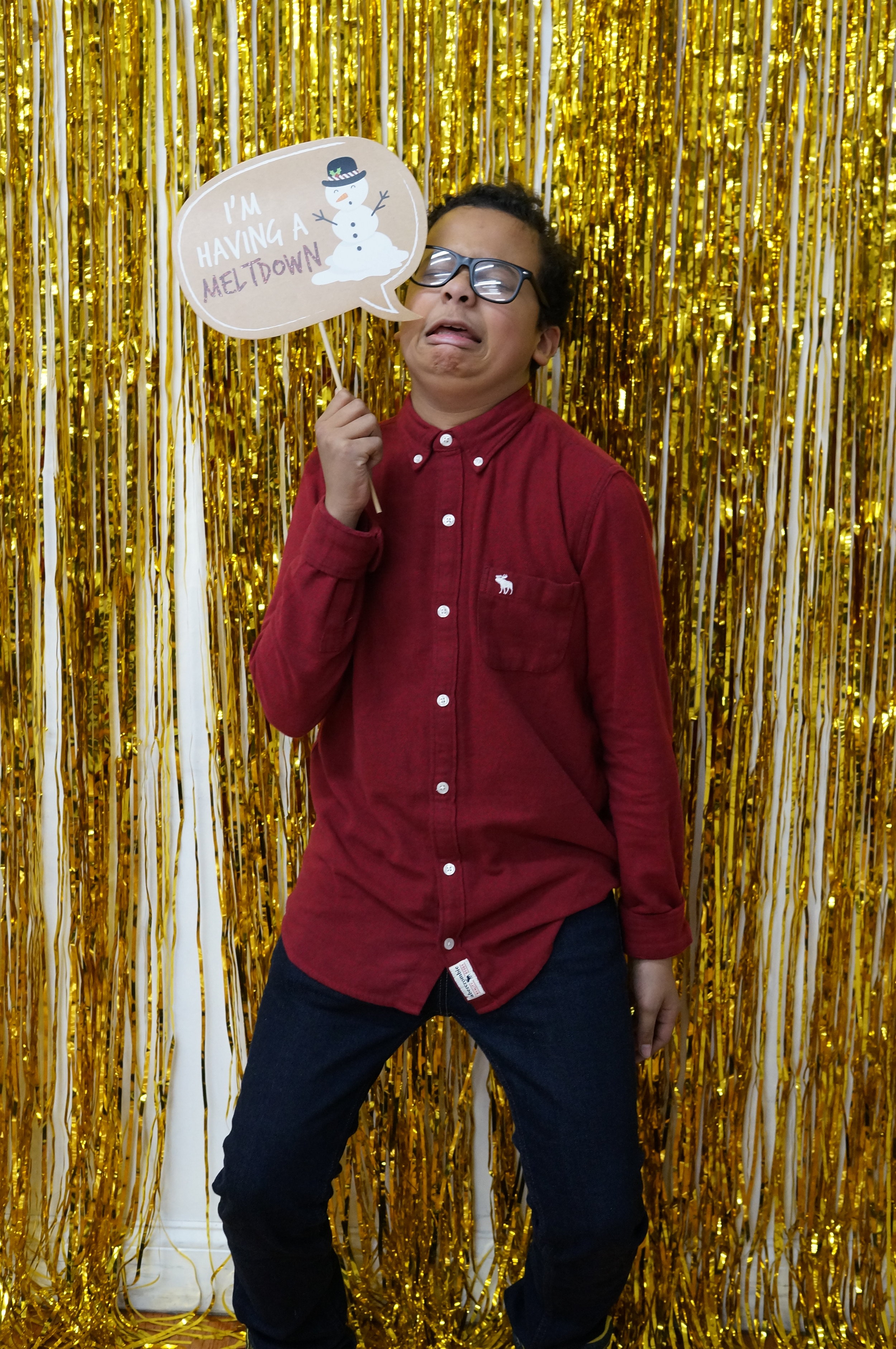
BEAM LA Hosts a Math Competition
On Saturday, December 2nd, BEAM LA hosted a math competition at the University of Southern California (USC) for partner middle school students. Forty students from grades 6-8 participated in a group round and individual round, solving puzzly math problems alongside their peers.
The students were deeply engaged in the problems; some students continued working on the problems during lunch and break time, even after submitting their answers! Here's what some students had to say:
-Abraham, 6th grader
-Ava, 6th grader
Isabella, 7th grader
There were two problems in the individual round that stumped all the participants. Can you solve one?
How many whole numbers from 100 to 999 (including 100 and 999) have no two digits next to each other that are the same? (For example, 121 is good, but 322 and 112 are not).
Pictured below are the top 2 performers from each grade level. The top winning teams were from UCLA CS and Synergy Kinetic.
A big thanks goes to: all of our participating schools and students, the USC Math Department and Viterbi School EOP for sponsoring the event, and MATHCOUNTS and The Art of Problem Solving for allowing us to use their problems in the competition.
Fatimatou speaks about her high school/college experience
Fatimatou attended BEAM 7 in the summer of 2011, as part of BEAM's very first cohort. Six years later she's a sophomore at Manhattan College with a Dean's scholarship, planning on attending medical school. On Saturday, December 2, she came to speak to BEAM's current 9th and 10th grade students about her experience in high school and college.
Fatimatou, Diamond, and Ilearys at BEAM in the summer of 2011
Fatimatou attended the Bronx Academy of Health Careers for high school, and says that it did not prepare her for college. "Since I had taken Algebra I before high school, I started with geometry. But once I finished Algebra II, I was taking the same math class every year because they didn't have anything more."
Since her high school offered limited classes, Fatimatou took advantage of every extra-curricular she could, including College Now and a summer program in math at Texas State University.
Starting college was a difficult transition, even with her extracurricular work. "In high school, I would start assignments the day they were due, or the day before, and get a good grade. In college, that doesn't work." Her advice? "Write down your assignments in a calendar, and give yourself early deadlines. Always know something about the topic before you go to class, even if that's from watching a YouTube video. Don't be afraid to ask for help. Go to your professor's office hours."
Fatimatou speaking to BEAM's students on Dec. 2, 2017
BEAM's high school students had questions about balancing work and a social life, paying for school, and college admissions. Fatimatou's perspective was extremely helpful, because of all the challenges she faced. BEAM hopes the Saturday program helps our current 9th and 10th grade students have an even smoother transition to college!
BEAM Students Attend Yale Splash
On Saturday, November 11th, 90 BEAM students in eighth through twelfth grade spent the day at Yale University taking courses on topics ranging from Korean language to abstract algebra.
Yale Splash is a special event run by Yale undergraduate students who volunteer to teach classes on any topic of interest to middle and high school students. BEAM takes a group to this event each November.
The day started at 6:40am, when students boarded buses for the hour and a half hour ride to New Haven. Classes started at 9:30am, and students spent all day learning about a variety of topics.
Here's what some BEAM students said about their day:
“My favorite class was the “Building Continents and Making Oceans” class, about building oceans. It gave me a really good background for my earth science class. The class went more in depth on different categories of rocks that were on my test this week, and helped me understand the topic more.”
“The classes were extremely interesting. The teachers were really young so it was easy to relate to them. My favorite class was “Introduction to Psychology.” ”
“My favorite class is a tie between “Colonialism and Race” and “What is Education: An Inquiry.” In Colonialism & Race, it was a great class, and the teacher told us about some really good books - “The Racial Contract,” etc. I learned a lot of new stuff.”
“The classes were very interesting. The teachers were engaging with the students, and also being informative at the same time. My favorite class, for me, was “Cloning” because the teacher split us into groups, and we had a discussion about cloning, pro and con.”
“My favorite class was “Muay Thai,” because it took my mind off of academics for a bit.”
BEAM Students Visit Columbia with Inside Engineering
On Saturday, October 21st, 21 BEAM 9th and 10th grade students visited Columbia University. Dr. Clark Hung, Professor of Biomedical Engineering at Columbia, met the students in the undergraduate biomedical engineering lab, and gave a half hour presentation on diabetes. He discussed both the causes of diabetes, as well as some current treatments and areas of research.
After the the talk, the students had the chance to do some hands-on work. They made alginate beads by dropping alginate solution into calcium choloride solutions. They tested different sizes of needles to make different sized beads. These beads could be used to encapsulate cells for diabetes treatment.
Everyone had fun making lots of multicolored beads.
BEAM would like to thank the Hung Lab and Columbia's engineering outreach for organizing an amazing experience.
What's the longest you've worked on a math problem??
Each summer, we ask students at the beginning and end of BEAM 6 and BEAM 7, “What’s the longest you’ve worked on a math problem?” This year, the median answer for our BEAM 7 students went from one hour to three hours and, as you’ll see, many students answered in days. The longest answer this year was “>30 days”! Students were then asked what it was like to work on a problem for that long, and you’ll see them grappling with the frustration and exhilaration that come with working hard on truly challenging problems. BEAM’s summer programs are designed to build both resilience and joy in mathematics, building a foundation that will carry students far. We’re so proud to see our middle school students become mathematicians before our very eyes each summer.
Angel is an 8th grader at MS 343, the Academy of Applied Mathematics and Technology.
Yeramis is an 8th grader at Girls Prep Lower East Side Middle School. She also attended BEAM 6 last summer.
Anthony is an 8th grader at MS 223, The Laboratory School of Finance and Technology. He also attended BEAM 6 last summer.
Camila is an 8th grader at MS 223, The Laboratory School of Finance and Technology. She also attended BEAM 6 last summer.
Maryam is an 8th grader at MS 343, the Academy of Applied Mathematics and Technology. She also attended BEAM 6 last summer.
Storm is an 8th grader at the South Bronx Early College Academy. He also attended BEAM 6 last summer.
Thays is an 8th grader at Ichan Charter School 2. She also attended BEAM 6 last summer.
Lismary is an 8th grader at Columbia Secondary School. She also attended BEAM 6 last summer.
Gravitational Waves Rock Scientists
by Dan Zaharopol
The Nobel Prize in physics was just announced for 2017, and the winners are three physicists who found proof of something called "gravitational waves," which were predicted by Albert Einstein a hundred years ago. They found these gravitational waves being generated by two black holes colliding a billion light years from Earth. Want to learn what they did and how? Read on!
Photo by Mysid - Own work. Self -made in Blender & Inkscape., CC BY-SA 3.0,
The History
A hundred years ago, Albert Einstein developed the Theory of General Relativity. It said that the force of gravity, which holds us to the surface of the Earth and keeps the Earth orbiting around the sun (and, really, makes the whole universe work) is actually because massive objects literally bend space. If you put a bowling ball on your bed, the mattress will drop down. Roll a marble along the bed, and it will fall towards the bowling ball. That's how gravity works, too.
Einstein did a whole bunch of mathematical calculations and discovered something else: that if objects were speeding up or slowing down, or changing direction, then they would also give off gravitational waves. In other words, space would not just bend in a curve like the bowling ball, but you would actually get tiny ripples like when you throw a pebble into water.
The problem is that those ripples are really small, so nothing could detect them. There wasn't anything massive enough nearby to make gravitational waves we could detect, and because the waves get weaker the farther away you get, all the massive stuff was too far for us to detect.
Photo by NASA [Public domain]
The Detector
To fix this, scientists developed LIGO, the Laser Interferometer Gravitational-Wave Observatory, funded to the tune of a billion dollars by the National Science Foundation, and put together by MIT and Caltech.
Here's the challenge: We have to somehow detect the fact that space is contracting and getting bigger between two objects - the two objects are getting just a tiny bit closer or farther away even though they're not moving. But the amount they're getting closer together is way too small: the two objects might get closer by 0.0000000000000000001%. You didn't read that wrong. That's one part in 10^15. You'd never be able to see that!
Photo by Kanijoman (Flickr: Laboratorio LIGO en Louisiana) [CC BY 2.0 (http://creativecommons.org/licenses/by/2.0)]
However, the farther apart two objects are, the more space there is between them. So they built LIGO to have tubes that are two and a half miles long. (Can you imagine that? In Manhattan, this building wouldn't even fit east to west!)
Even that far apart, the biggest gravitational waves we might see would still only change the length of the tube by less than the width of a proton (which is a tiny, tiny part of an atom). But using lasers, scientists were able to set up a system that could detect even so small a change in length.
Actually, LIGO wasn't just one observatory, it was two, one in Washington and one in Louisiana. They had to build two of these huge things because with just one, if something shakes the building (like a storm or a small earthquake or a tree falling), the detector might get a false reading. But with two, you can check to see if they both got the same readings, and know for sure that it was something from outside Earth.
The Discovery
On September 14, 2015, both detectors picked up a signal. Scientists rushed to examine them. Did they look like signals from two objects in space colliding, which might make a strong enough signal? Yes. Could it be an accident, like a tree falling? They did a lot of probability, and confirmed that the chance of both detectors getting the same signal at the same time was too small to be coincidence. It was real.
Photo by Charly W. Karl (Flickr: NSF’s LIGO Has Detected Gravitational Waves) [CC BY-ND 2.0 (https://creativecommons.org/licenses/by-nd/2.0/)]
They analyzed the signal, and they were able to use it to track down what was happening. It was two black holes colliding. Black holes are what's left behind when a huge star runs out of fuel and collapses. One of these two black holes was 36 times as massive as the sun, and the other was 29 times as massive. Despite this, they were each quite small; much smaller than our moon! These incredibly dense objects were circling each other 250 times per second before they crashed into each other, merging into an immense black hole as massive as 62 suns. (If you did the arithmetic, the other 3 solar masses were converted into energy for the gravitational waves!)
Here's the big deal. Scientists figured all this out - how big the black holes were, where they were, how fast they were circling each other - all from the gravitational waves they detected. They used the math in Einstein's theory of relativity and solved it from there!
What It Means
One hundred years after Einstein predicted gravitational waves using a mathematical analysis of his theory of general relativity, we found them. It's amazing that science could make a prediction so long ago that would finally be proven now.
However, this is much more than proving Einstein's old theory. Now we can detect things about space using gravitational waves. We never would have found those two black holes without the gravitational waves, because you can't see black holes: they don't give off any light! But they do give off gravity, and now we have a way to "see" it.
Photo by NASA [Public domain], via Wikimedia Commons
Up until now, basically everything we've been able to tell about outer space comes from one of two things. One is "electromagnetic radiation," which is a fancy word for light (it includes things like x-rays and gamma rays and infrared radiation, but it's all just different wavelengths of light). But electromagnetic radiation gets blocked by dust particles out in space, so we can't see very far with it. The other way to tell anything about outer space is math, using it to make theories about what must be there. But without seeing anything to confirm the math, we can never know for sure.
Well, gravitational waves aren't blocked by dust. They keep going regardless, because they're part of spacetime itself. Using them, we can see much farther out than we could before.
Because gravitational waves move at the speed of light, we're actually seeing what happened a long time ago. Those black holes were 1.2 billion light-years away, which means they collided 1.2 billion years ago - that's how long it took for the gravitational waves to reach us. Because gravitational waves aren't blocked by dust, we should theoretically be able to see them from as far away as we want, depending on how good (and big) of a detector we build. We should be able to see all the way to the formation of the universe, which we've never really been able to see before. It will take decades, but we can really start to understand how the universe began.
It's an exciting time time to be an astrophysicist. Well over a thousand scientists worked together on this discovery. Engineers built the detector. This is one of the most amazing team efforts in the history of the world, and it will be remembered for centuries to come.
NYC High School Admissions: Conquering the Labyrinth
Last weekend, thousands of eighth graders lined up outside of Brooklyn Technical High School to attend the New York City High School Fair. Students and parents had the opportunity to familiarize themselves with the high school admissions process and meet with representatives from high schools all over the city in hopes of finding the right ones to apply to.
It is no secret that the NYC high school admissions process is a maze! The application process has many obstacles to get through, some of which include: taking a test, writing an essay, submitting a portfolio, attending an open house and more - just to be considered! Without navigating through these obstacles, the chances of getting in to a great-fit high school are real hard. For BEAM students, a great-ft school is one that offers advanced coursework such as AP Physics and AP Calculus, the opportunity to take college courses, a supportive and nurturing environment and the opportunity for college guidance and readiness.
Here are some common "big-picture" errors students make on their high school application (Round 1 form):
- Not doing enough research. It's important that students do their research on each school they are interested in. Many high ranking schools require tests (like the specialized high schools), essays (like Manhattan/Hunter Science HS), portfolios (like Columbia Secondary HS), or a mixture of these (Bard High School/Early College, BHSEC). Do your research early so that you can be ahead of the game and have a plan to get all these things done on time. Go on school's websites, visit insideschools.org, or call the school directly.
- Be sure to know which schools are "limited unscreen." Limited unscreen schools are schools that only look at your attendance at an open house. They are a good opportunity to get a fresh start if your transcript is rocky. Open house dates are available online, usually on a school's website. Sometimes you might have to call a school directly and get information that way. Also, attending open houses allow you the opportunity to see if you can actually envision yourself in the school for four years.
- Look at the requirements of "screened" schools. A screened school is one that looks at your transcript - this includes: 7th grade grades, state test scores and attendance and punctuality. You want to make sure that you are applying to schools that you have a good chance of getting in to. When looking at schools that you are interested in, make sure grade ranges and state test scores match your transcript. If you have too many absences but have a legitimate reason (ie: medical, or family issues) don't hesitate to write the school a letter. Schools understand that life happens, and being honest and up front is the right thing to do.
- Rank schools in the order YOU want to go to them. Schools cannot see how you rank them. Some schools may tell you that you have to rank them #1 in order to be accepted - that is false information! Seriously, rank the schools in the order you want. Ultimately, you will be spending four years there.
- Know what a good schools has to offer YOU. Make sure the schools you are looking for have what you need in order to be successful. For most BEAM students this means: AP Calculus and AP sciences (Biology, Chemistry, Physics). For others it might be a great Lacrosse or Basketball team or the opportunity to join a Robotics or Debate club. Remember that you will spend almost half of your day in this school - make sure the school has things that you will benefit from and enjoy.
Here are some small logistical things to watch out for:
- Double and triple check your Round 1 form! Make sure codes and school names match. If they don't, your guidance counselor might not catch it and you may end up being accepted in to the wrong school.
- Use all 12 spaces. Make sure you completely fill out your Round 1 form. It is better to get in to a Round 1 school (even LOW on your list) than to have no school and be stuck in Round 2.
- Remember that some schools may count twice. For example, the Manhattan and Queens campuses of BHSEC or the multiple programs at Midwood. If you really want to go to these schools, use two spaces on your Round 1 form to put both programs down. Not only do you take up two spaces on your form, but you increase your chances of being admitted. Some of our alumni have even had luck transferring from programs in their first or second year in the school.
Hear what our experts have to say about their high school admissions process!
““BEAM showed me my options. They provided me with personalized school directories which led me to search for best-fit schools, on my own.” ”
“I went to the Citywide High School Fair with BEAM. They taught me how to shake hands and introduce myself. While there, I talked with the Assistant Principal of the Academy for Software Engineering (AFSE). I really liked her and the school, so I went to an Open House to learn more. I ended up ranking it first and got in.”
For more general information, go here:



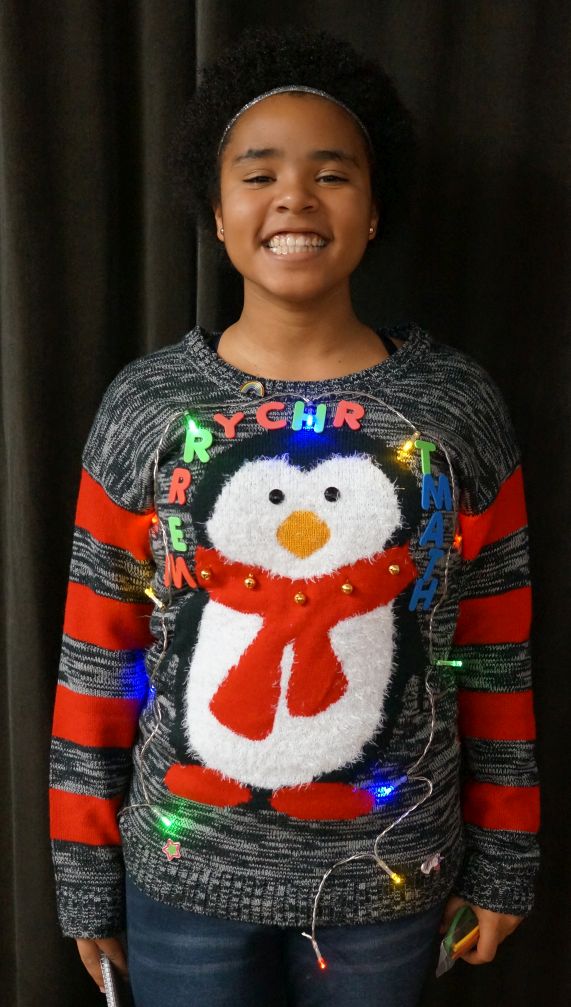








































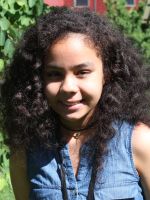


![Photo by NASA [Public domain]](https://images.squarespace-cdn.com/content/v1/561a6eede4b0448989c88951/1506093894081-NJJ1DYJISRPZP541MT8J/PW-2016-02-19-LIGO-reactions.jpg)
![Photo by Kanijoman (Flickr: Laboratorio LIGO en Louisiana) [CC BY 2.0 (http://creativecommons.org/licenses/by/2.0)]](https://images.squarespace-cdn.com/content/v1/561a6eede4b0448989c88951/1506094618732-NUJPZV338T5BV5SDKQQL/download.jpg)
![Photo by Charly W. Karl (Flickr: NSF’s LIGO Has Detected Gravitational Waves) [CC BY-ND 2.0 (https://creativecommons.org/licenses/by-nd/2.0/)]](https://images.squarespace-cdn.com/content/v1/561a6eede4b0448989c88951/1506094873767-MTW1I4DY0E3R90PL4JFX/24984166005_8e152632f3_b.jpg)
![Photo by NASA [Public domain], via Wikimedia Commons](https://images.squarespace-cdn.com/content/v1/561a6eede4b0448989c88951/1506095001829-34CLS8TPGDIKY2JJD5OO/EM_Spectrum3-new.jpg)


